Frank F. Weber's Blog, page 16
October 30, 2018
Happy Halloween!
Happy Halloween! Roc Herpich was alarmed to find his former lover, Karen Pannell, was murdered and “ROC” had been written on the wall in blood. It appeared she had written the letter with her bloodied right hand. Fortunately, forensic work identified her killer.
-Karen was exclusively left-handed and she had no blood on her left hand.
-Further, she had been stabbed 16 times, including being stabbed through the spinal cord, which would have left her unable to write. Stabbing is a very aggressive type of murder often suggesting rage toward the victim.
-Blood splatter from the stabbing had dried on the wall below where the name was written, suggesting the letters “ROC” were written after she was dead.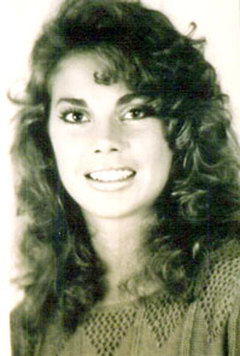 Karen Pannell Karen Ann, 39, of Oldsmar, Florida, died on Saturday, October 11, 2003 at her home. Karen was a graduate of Northside High School in Warner Robins, Georgia. She was a former Model and Flight Attendant. Since age 27, she worked for American Airlines as a Customer Service Agent in Tampa, Florida.
Karen Pannell Karen Ann, 39, of Oldsmar, Florida, died on Saturday, October 11, 2003 at her home. Karen was a graduate of Northside High School in Warner Robins, Georgia. She was a former Model and Flight Attendant. Since age 27, she worked for American Airlines as a Customer Service Agent in Tampa, Florida.
The investigators knew Karen hadn’t written the letters, and now knew the killer knew her intimately enough to know the name of her former boyfriend.
Karen had recently petitioned for higher child support, but her ex-husband was out of state at the time of her murder. She had been recently diagnosed with Multiple Sclerosis. Karen and two brothers Tim Permenter found her body. Tim was an ex-boyfriend who had dated Karen until she found out he had previously served 12 years in prison for pimping out women and she dumped him. (Tim went to a competitor’s home and stood outside, shooting up his home. The man responded by shooting back and hit Tim two times. After being released from the hospital Tim went to prison). Tim stated he had stopped by to visit the day after her murder, and found her lying dead in the home. His 911 call was suspicious as he had declared her dead, but suggested he hadn’t approached her body.
Karen and two brothers Tim Permenter found her body. Tim was an ex-boyfriend who had dated Karen until she found out he had previously served 12 years in prison for pimping out women and she dumped him. (Tim went to a competitor’s home and stood outside, shooting up his home. The man responded by shooting back and hit Tim two times. After being released from the hospital Tim went to prison). Tim stated he had stopped by to visit the day after her murder, and found her lying dead in the home. His 911 call was suspicious as he had declared her dead, but suggested he hadn’t approached her body.
Tim’s mother, Donna Finch, gave birth to him as a teenager. She divorced Tim’s father after 2 years. He left the state and never contacted his son again. Donna said she raised Tim with her father Alex Finch (former Clearwater mayor and lawyer). Alex was murdered in his office in 1989 when Tim was in his early 20’s. The psychologist who testified at the trial suggested Tim was raised primarily by Donna Finch’s grandparents.
A pizza had been ordered to Karen’s home that evening, and Karen answered the door and paid for it. 3 slices of pizza were missing from the pizza delivered to her home, yet Karen had no pizza in her stomach. Investigators sprayed the pizza box with ninhdrin. (When a protein reacts with copper sulfate, it forms a violet colored print). In this case, it revealed a violet finger print belonging to Tim Permenter. Further, The pizza delivery man and two neighbors had noticed Tim’s car in the driveway. He claimed he was at a cabin that night and didn’t arrive until the next day. And finally, Tim’s cell phone had used a tower in Karen’s neighborhood on the night of the murder, when he claimed he wasn’t in the area.
Karen had helped convict her killer by scratching the killer. A DNA analysis first suggested there wasn’t enough DNA to get a reading. A new form of testing was able to use the DNA under Karen’s fingernails. The testing revealed Tim Permenter’s DNA.
On October 24, 2007, a jury convicted Timothy Permenter of the first-degree murder of Karen Pannell. The jury voted seven to five in favor of the death penalty, but the trial court sentenced him to life in prison without the possibility of parole.
In the Halloween theme, lets listen to some Blue Oyster Cult. The last time we flew into San Jose, Brenda and I, Branden and Nicolette, and Preston and Olivia all went to watch Blue Oyster Cult perform “Burnin For You” and “Don’t Fear the Reaper” on Santa Cruz beach. Great Time! Christopher Walken was right though, it could have used more cowbell!
Thanks for listening,
Frank Pierz headed for another section championship in football.
Jake and Carissa Andres are headed to state in Cross Country.











-Karen was exclusively left-handed and she had no blood on her left hand.
-Further, she had been stabbed 16 times, including being stabbed through the spinal cord, which would have left her unable to write. Stabbing is a very aggressive type of murder often suggesting rage toward the victim.
-Blood splatter from the stabbing had dried on the wall below where the name was written, suggesting the letters “ROC” were written after she was dead.
 Karen Pannell Karen Ann, 39, of Oldsmar, Florida, died on Saturday, October 11, 2003 at her home. Karen was a graduate of Northside High School in Warner Robins, Georgia. She was a former Model and Flight Attendant. Since age 27, she worked for American Airlines as a Customer Service Agent in Tampa, Florida.
Karen Pannell Karen Ann, 39, of Oldsmar, Florida, died on Saturday, October 11, 2003 at her home. Karen was a graduate of Northside High School in Warner Robins, Georgia. She was a former Model and Flight Attendant. Since age 27, she worked for American Airlines as a Customer Service Agent in Tampa, Florida. The investigators knew Karen hadn’t written the letters, and now knew the killer knew her intimately enough to know the name of her former boyfriend.
Karen had recently petitioned for higher child support, but her ex-husband was out of state at the time of her murder. She had been recently diagnosed with Multiple Sclerosis.
 Karen and two brothers Tim Permenter found her body. Tim was an ex-boyfriend who had dated Karen until she found out he had previously served 12 years in prison for pimping out women and she dumped him. (Tim went to a competitor’s home and stood outside, shooting up his home. The man responded by shooting back and hit Tim two times. After being released from the hospital Tim went to prison). Tim stated he had stopped by to visit the day after her murder, and found her lying dead in the home. His 911 call was suspicious as he had declared her dead, but suggested he hadn’t approached her body.
Karen and two brothers Tim Permenter found her body. Tim was an ex-boyfriend who had dated Karen until she found out he had previously served 12 years in prison for pimping out women and she dumped him. (Tim went to a competitor’s home and stood outside, shooting up his home. The man responded by shooting back and hit Tim two times. After being released from the hospital Tim went to prison). Tim stated he had stopped by to visit the day after her murder, and found her lying dead in the home. His 911 call was suspicious as he had declared her dead, but suggested he hadn’t approached her body. Tim’s mother, Donna Finch, gave birth to him as a teenager. She divorced Tim’s father after 2 years. He left the state and never contacted his son again. Donna said she raised Tim with her father Alex Finch (former Clearwater mayor and lawyer). Alex was murdered in his office in 1989 when Tim was in his early 20’s. The psychologist who testified at the trial suggested Tim was raised primarily by Donna Finch’s grandparents.
A pizza had been ordered to Karen’s home that evening, and Karen answered the door and paid for it. 3 slices of pizza were missing from the pizza delivered to her home, yet Karen had no pizza in her stomach. Investigators sprayed the pizza box with ninhdrin. (When a protein reacts with copper sulfate, it forms a violet colored print). In this case, it revealed a violet finger print belonging to Tim Permenter. Further, The pizza delivery man and two neighbors had noticed Tim’s car in the driveway. He claimed he was at a cabin that night and didn’t arrive until the next day. And finally, Tim’s cell phone had used a tower in Karen’s neighborhood on the night of the murder, when he claimed he wasn’t in the area.
Karen had helped convict her killer by scratching the killer. A DNA analysis first suggested there wasn’t enough DNA to get a reading. A new form of testing was able to use the DNA under Karen’s fingernails. The testing revealed Tim Permenter’s DNA.
On October 24, 2007, a jury convicted Timothy Permenter of the first-degree murder of Karen Pannell. The jury voted seven to five in favor of the death penalty, but the trial court sentenced him to life in prison without the possibility of parole.
In the Halloween theme, lets listen to some Blue Oyster Cult. The last time we flew into San Jose, Brenda and I, Branden and Nicolette, and Preston and Olivia all went to watch Blue Oyster Cult perform “Burnin For You” and “Don’t Fear the Reaper” on Santa Cruz beach. Great Time! Christopher Walken was right though, it could have used more cowbell!
Thanks for listening,
Frank Pierz headed for another section championship in football.
Jake and Carissa Andres are headed to state in Cross Country.












Published on October 30, 2018 17:21
October 25, 2018
Guiding Individuals with Mental Illness & Sexual Issues into Employment
Book Reviewer Susan Ready reviews The I-94 Murders:
https://sockfairies.blogspot.com/2018/10/book-review-i-94-murders.html
 Guiding Individuals with Mental Illness & Sexual Issues into Employment
Guiding Individuals with Mental Illness & Sexual Issues into Employment
Frank Weber, M.S./L.P., Clinical Director of CORE Professional Services PA
Employment is structure. CORE works closely with RISE, as they assist individuals coming out of incarceration with securing work. RISE does excellent work, but are underfunded for the need People need a purpose.
People need a purpose.
If you can’t find purpose in the work, you can find it in the paycheck. We live in a community. Work allows people to contribute to their community. People need work (paid or volunteer). Work helps them feel connected the community Circle of X’s- Labeled “Community”
Circle of X’s- Labeled “Community”
When people in the Cree community identify an individual who is struggling, they ask various healthy people to stop over, day after day to talk to them. Rupert Ross, Prosecutor in Ontario, wrote a great book about this titled, Returning to the Teachings. Quote from Cree Elder when asked, “Do you swear to tell the whole truth and nothing but the truth? “No, I don’t know the whole truth. Isn’t it your job to determine what the truth is?” Travis Hirschi’s Control Theory. (Instead of asking, “Why are people deviant?” We should ask, “Why isn’t everyone deviant?” Hirschi found, 4 reasons:
Travis Hirschi’s Control Theory. (Instead of asking, “Why are people deviant?” We should ask, “Why isn’t everyone deviant?” Hirschi found, 4 reasons:
AttachmentInvolvementCommitmentBelief (Morality & Spirituality) Attachment- someone close with good morals
Attachment- someone close with good morals  Involvement- in work or school
Involvement- in work or school  Commitment- parenting, attending work or school daily. Learning to play an instrument
Commitment- parenting, attending work or school daily. Learning to play an instrument  Belief- they have a set of morals or spiritual beliefs that are honorable
Belief- they have a set of morals or spiritual beliefs that are honorable  Working Through Shame
Working Through Shame
People who have been charged with an offense often carry so much shame associated with it, that they get angry when anyone, including an employer, asks them about it. An employer who cares about the community should ask questions. I tell people that when you take responsibility for your behavior, it ends the rumors. “I made a mistake, but I’ve made changes.” When you minimize, it forces people to ask questions There isn’t a 1 size fits all safety plan for sex offenders, but there is moral behavior that is right in all circumstances. There are huge differences in the risk presented by an 18 year old who is charged with a statutory offense for dating a 15 year old, and someone who sexually assaults a child. The advantage of having a psychosexual assessment completed is that the offender’s risks are individualized specific to the offender.
There isn’t a 1 size fits all safety plan for sex offenders, but there is moral behavior that is right in all circumstances. There are huge differences in the risk presented by an 18 year old who is charged with a statutory offense for dating a 15 year old, and someone who sexually assaults a child. The advantage of having a psychosexual assessment completed is that the offender’s risks are individualized specific to the offender.  Safety Plan
Safety Plan
People who are dealing with a problematic pattern of behavior are taught to get through the second, minute, hour, day. You avoid the trigger or the risk by keeping yourself busy doing something else. Intelligent people plan in order to avoid risk on a day to day basis. “Even people who believe in fate look both ways before they cross the street.”
Goals are listed as they go back to Hirschi’s idea of Belief & Commitment. You can’t live by values if you don’t identify them.
Our job is to help everyone. (The clients and the community.) We have to balance the risk to the community with the benefit to the client. Sometimes the risk is too great, even though it could have great benefit to the client.
You can’t help people close to you if you put your job at risk. (Applies to both you and the client.) We all have restrictions. (We have windows in therapists offices for the sake of the therapist. It would be foolish for me to interview a client alone who accused last professional of poor sexual boundaries.). Take care of yourself. I don’t tolerate abuse so if someone is being obnoxious I’ll end the phone call. (I’ve had people ask, “You’re not going to hang up on me are you?” If they’re being obnoxious I respond, “If you’re still on the line in 5 seconds, yes.” Problems created by behavior cannot be resolved with words alone. Being sorry isn’t enough. Learning is defined as a change in behavior as a result of experience. If your behavior hasn’t changed, you haven’t learned
Problems created by behavior cannot be resolved with words alone. Being sorry isn’t enough. Learning is defined as a change in behavior as a result of experience. If your behavior hasn’t changed, you haven’t learned
 Internal Barriers. Do they:
Internal Barriers. Do they:
Understand that this is someone’s daughter, or they could be incarcerated for behaviorTakes responsibility for inappropriate behaviorUnderstands they made a mistakeTake steps to avoid possible repeat of offense. (No longer has contact with minors. No longer on the internet.) External Barriers
External Barriers
Staff supervision or job coach. “God may forgive you, but the rest of need evidence—a track record.”
Are the coworkers aware of concerns. (For example: A doctor with an ethics violation told staff)
Find or create an environment that doesn’t allow the opportunity to offend
Many of the people we help aren’t easy to work with. When I am dealing with a difficult person I tell myself, “God put people like you on this earth just to prove I can be a decent person." Anger - No matter how difficult they present, I can use this to help them.
Anger - No matter how difficult they present, I can use this to help them.
“I’m glad to see you have strong feelings. Like me, you’d like to see some changes. Let’s see if we can use those strong feelings productively.” So many people come in here and talk my ear off. It’s such a relief to have someone just sit and listen to my advice. Plus, I’ve heard moments of silence can be some of the most powerful moments in therapy. I can’t believe we got to this point so quickly.
So many people come in here and talk my ear off. It’s such a relief to have someone just sit and listen to my advice. Plus, I’ve heard moments of silence can be some of the most powerful moments in therapy. I can’t believe we got to this point so quickly.  My response: “It’s worse than you think.” I get so frustrated with it. After giving them a moment to vent, I say, “Let’s focus on what we can do about your situation. When they bring it up again, I point out, “How come I’m the only one who wants you to move forward? There’s no future in the past.”
My response: “It’s worse than you think.” I get so frustrated with it. After giving them a moment to vent, I say, “Let’s focus on what we can do about your situation. When they bring it up again, I point out, “How come I’m the only one who wants you to move forward? There’s no future in the past.”  Take advantage of their narcissism. I might say, “Most people struggle with understanding this, but I think you’re someone who could work his way through this.”
Take advantage of their narcissism. I might say, “Most people struggle with understanding this, but I think you’re someone who could work his way through this.”
Reward positive behavior. 3 genuine +’s for every confrontation. People won’t listen to you until they’re convinced you’re invested in them.
 Mood DisorderPeople benefit from being active.Exercise is more effective in reducing depression by itself, than either therapy or medication. Fortunately, they are not exclusive
Mood DisorderPeople benefit from being active.Exercise is more effective in reducing depression by itself, than either therapy or medication. Fortunately, they are not exclusive
 Schizophrenia
Schizophrenia
Accept that some days will be unproductive. The key to success is “low goals.” I’m not saying people aren’t capable of great things. People come in to therapy because they’re struggling, so don’t expect them to fix everything at once. I will give you a simple physical example. A group home asked that I develop a program to get a schizophrenic man to place his clothes in the laundry basket in the closet. (Pretty minimal problem when you consider he was once an arsonist who physically injured people and we now had that all resolved.) I told them to place the laundry basket in the middle of his bedroom and every week move it an inch closer to the closet. In one year, he was placing his clothes in the laundry basket in the closet. Impulse Disorder
Impulse Disorder
Impulsive people benefit from being active. Most individuals diagnosed with ADHD don’t need medication as adults as they have jobs that allow them to get up and move around Autism
Autism
Often obsessive by nature. (People who request a sex change are seven times more likely to have an Autism diagnosis.) (not all obsessions are bad)
(not all obsessions are bad)
Help them find an obsession that’s not harmful. If they can get into trains, take them to a railroad station or on a train ride. If you don’t guide the obsession they will find their own Histrionic
Histrionic
Your needs can’t come above your employer in your work performance. “If it was fun, they wouldn’t pay people to do it.” I like to help people, but I can’t devote my day to one person. Porn is not a solution. Porn takes sex completely out of the context of loving and caring relationships.
Porn is not a solution. Porn takes sex completely out of the context of loving and caring relationships.
Over-stimulating the limbic system isn’t good for you. Fish will hit on a chartreuse fish lure over a live minnow. People will hit on porn over developing a relationship. Rats have a similar limbic system and will press a bar to have that same area stimulated (when people access porn) until they’re dead. They won’t eat or drink water. They just keep pushing the bar. And that’s what people are when they access porn. I have to feel your life means more than that.
How do you decide what is porn? We don’t have to. It has an X rating and is packed in bags. Beyond obvious porn, consider does the material lead to problematic behavior. If the client acknowledges having fantasies of abusive behavior after watching children’s movies or reading children’s books, they shouldn’t have them. We need to act in the best interest of people who don’t act in the best interests of themselves. Sometimes the right behavior needs to occur before people will make the right choices. I’ve worked with people who never would have achieved sobriety if they hadn’t been incarcerated
 Sex is like boxing. If you’re both not consenting one of you is committing a crime.
Sex is like boxing. If you’re both not consenting one of you is committing a crime.  Emotions---Thoughts---Behaviors
Emotions---Thoughts---Behaviors
People get into trouble when they experience strong emotions and we let them guide their thoughts in an unhealthy direction.
Behaviors---Thoughts---Emotions
To resolve this, I ask people to focus on engaging in the right behavior (even if it doesn’t make sense), and the healthy thoughts will follow
 “One thing leads to another. Not always. Sometimes one thing leads to the same thing. Ask any addict.” -George Carlin
“One thing leads to another. Not always. Sometimes one thing leads to the same thing. Ask any addict.” -George Carlin  Ultimately to help people with mental illness or sexual issues maintain work, you need to analyze the day, and make a plan for addressing all of the risks.How will they get to work?
Ultimately to help people with mental illness or sexual issues maintain work, you need to analyze the day, and make a plan for addressing all of the risks.How will they get to work?
Where will they be if they get to work early?
Who are the customers at work?
Are there risk factors in their work day? Safety Plan for them.
Who do they take their breaks with?
Will a ride be available when they are done?
Will someone be available when they arrive home? My healthy obsession is writing mysteries.
My healthy obsession is writing mysteries.
Thanks for listening,
Frank
Halloween in Leonardtown






https://sockfairies.blogspot.com/2018/10/book-review-i-94-murders.html
 Guiding Individuals with Mental Illness & Sexual Issues into Employment
Guiding Individuals with Mental Illness & Sexual Issues into EmploymentFrank Weber, M.S./L.P., Clinical Director of CORE Professional Services PA
Employment is structure. CORE works closely with RISE, as they assist individuals coming out of incarceration with securing work. RISE does excellent work, but are underfunded for the need
 People need a purpose.
People need a purpose.If you can’t find purpose in the work, you can find it in the paycheck. We live in a community. Work allows people to contribute to their community. People need work (paid or volunteer). Work helps them feel connected the community
 Circle of X’s- Labeled “Community”
Circle of X’s- Labeled “Community”When people in the Cree community identify an individual who is struggling, they ask various healthy people to stop over, day after day to talk to them. Rupert Ross, Prosecutor in Ontario, wrote a great book about this titled, Returning to the Teachings. Quote from Cree Elder when asked, “Do you swear to tell the whole truth and nothing but the truth? “No, I don’t know the whole truth. Isn’t it your job to determine what the truth is?”
 Travis Hirschi’s Control Theory. (Instead of asking, “Why are people deviant?” We should ask, “Why isn’t everyone deviant?” Hirschi found, 4 reasons:
Travis Hirschi’s Control Theory. (Instead of asking, “Why are people deviant?” We should ask, “Why isn’t everyone deviant?” Hirschi found, 4 reasons:AttachmentInvolvementCommitmentBelief (Morality & Spirituality)
 Attachment- someone close with good morals
Attachment- someone close with good morals  Involvement- in work or school
Involvement- in work or school  Commitment- parenting, attending work or school daily. Learning to play an instrument
Commitment- parenting, attending work or school daily. Learning to play an instrument  Belief- they have a set of morals or spiritual beliefs that are honorable
Belief- they have a set of morals or spiritual beliefs that are honorable  Working Through Shame
Working Through ShamePeople who have been charged with an offense often carry so much shame associated with it, that they get angry when anyone, including an employer, asks them about it. An employer who cares about the community should ask questions. I tell people that when you take responsibility for your behavior, it ends the rumors. “I made a mistake, but I’ve made changes.” When you minimize, it forces people to ask questions
 There isn’t a 1 size fits all safety plan for sex offenders, but there is moral behavior that is right in all circumstances. There are huge differences in the risk presented by an 18 year old who is charged with a statutory offense for dating a 15 year old, and someone who sexually assaults a child. The advantage of having a psychosexual assessment completed is that the offender’s risks are individualized specific to the offender.
There isn’t a 1 size fits all safety plan for sex offenders, but there is moral behavior that is right in all circumstances. There are huge differences in the risk presented by an 18 year old who is charged with a statutory offense for dating a 15 year old, and someone who sexually assaults a child. The advantage of having a psychosexual assessment completed is that the offender’s risks are individualized specific to the offender.  Safety Plan
Safety PlanPeople who are dealing with a problematic pattern of behavior are taught to get through the second, minute, hour, day. You avoid the trigger or the risk by keeping yourself busy doing something else. Intelligent people plan in order to avoid risk on a day to day basis. “Even people who believe in fate look both ways before they cross the street.”
Goals are listed as they go back to Hirschi’s idea of Belief & Commitment. You can’t live by values if you don’t identify them.
Our job is to help everyone. (The clients and the community.) We have to balance the risk to the community with the benefit to the client. Sometimes the risk is too great, even though it could have great benefit to the client.
You can’t help people close to you if you put your job at risk. (Applies to both you and the client.) We all have restrictions. (We have windows in therapists offices for the sake of the therapist. It would be foolish for me to interview a client alone who accused last professional of poor sexual boundaries.). Take care of yourself. I don’t tolerate abuse so if someone is being obnoxious I’ll end the phone call. (I’ve had people ask, “You’re not going to hang up on me are you?” If they’re being obnoxious I respond, “If you’re still on the line in 5 seconds, yes.”
 Problems created by behavior cannot be resolved with words alone. Being sorry isn’t enough. Learning is defined as a change in behavior as a result of experience. If your behavior hasn’t changed, you haven’t learned
Problems created by behavior cannot be resolved with words alone. Being sorry isn’t enough. Learning is defined as a change in behavior as a result of experience. If your behavior hasn’t changed, you haven’t learned Internal Barriers. Do they:
Internal Barriers. Do they:Understand that this is someone’s daughter, or they could be incarcerated for behaviorTakes responsibility for inappropriate behaviorUnderstands they made a mistakeTake steps to avoid possible repeat of offense. (No longer has contact with minors. No longer on the internet.)
 External Barriers
External BarriersStaff supervision or job coach. “God may forgive you, but the rest of need evidence—a track record.”
Are the coworkers aware of concerns. (For example: A doctor with an ethics violation told staff)
Find or create an environment that doesn’t allow the opportunity to offend
Many of the people we help aren’t easy to work with. When I am dealing with a difficult person I tell myself, “God put people like you on this earth just to prove I can be a decent person."
 Anger - No matter how difficult they present, I can use this to help them.
Anger - No matter how difficult they present, I can use this to help them.“I’m glad to see you have strong feelings. Like me, you’d like to see some changes. Let’s see if we can use those strong feelings productively.”
 So many people come in here and talk my ear off. It’s such a relief to have someone just sit and listen to my advice. Plus, I’ve heard moments of silence can be some of the most powerful moments in therapy. I can’t believe we got to this point so quickly.
So many people come in here and talk my ear off. It’s such a relief to have someone just sit and listen to my advice. Plus, I’ve heard moments of silence can be some of the most powerful moments in therapy. I can’t believe we got to this point so quickly.  My response: “It’s worse than you think.” I get so frustrated with it. After giving them a moment to vent, I say, “Let’s focus on what we can do about your situation. When they bring it up again, I point out, “How come I’m the only one who wants you to move forward? There’s no future in the past.”
My response: “It’s worse than you think.” I get so frustrated with it. After giving them a moment to vent, I say, “Let’s focus on what we can do about your situation. When they bring it up again, I point out, “How come I’m the only one who wants you to move forward? There’s no future in the past.”  Take advantage of their narcissism. I might say, “Most people struggle with understanding this, but I think you’re someone who could work his way through this.”
Take advantage of their narcissism. I might say, “Most people struggle with understanding this, but I think you’re someone who could work his way through this.”Reward positive behavior. 3 genuine +’s for every confrontation. People won’t listen to you until they’re convinced you’re invested in them.
 Mood DisorderPeople benefit from being active.Exercise is more effective in reducing depression by itself, than either therapy or medication. Fortunately, they are not exclusive
Mood DisorderPeople benefit from being active.Exercise is more effective in reducing depression by itself, than either therapy or medication. Fortunately, they are not exclusive Schizophrenia
SchizophreniaAccept that some days will be unproductive. The key to success is “low goals.” I’m not saying people aren’t capable of great things. People come in to therapy because they’re struggling, so don’t expect them to fix everything at once. I will give you a simple physical example. A group home asked that I develop a program to get a schizophrenic man to place his clothes in the laundry basket in the closet. (Pretty minimal problem when you consider he was once an arsonist who physically injured people and we now had that all resolved.) I told them to place the laundry basket in the middle of his bedroom and every week move it an inch closer to the closet. In one year, he was placing his clothes in the laundry basket in the closet.
 Impulse Disorder
Impulse DisorderImpulsive people benefit from being active. Most individuals diagnosed with ADHD don’t need medication as adults as they have jobs that allow them to get up and move around
 Autism
AutismOften obsessive by nature. (People who request a sex change are seven times more likely to have an Autism diagnosis.)
 (not all obsessions are bad)
(not all obsessions are bad)Help them find an obsession that’s not harmful. If they can get into trains, take them to a railroad station or on a train ride. If you don’t guide the obsession they will find their own
 Histrionic
HistrionicYour needs can’t come above your employer in your work performance. “If it was fun, they wouldn’t pay people to do it.” I like to help people, but I can’t devote my day to one person.
 Porn is not a solution. Porn takes sex completely out of the context of loving and caring relationships.
Porn is not a solution. Porn takes sex completely out of the context of loving and caring relationships.
Over-stimulating the limbic system isn’t good for you. Fish will hit on a chartreuse fish lure over a live minnow. People will hit on porn over developing a relationship. Rats have a similar limbic system and will press a bar to have that same area stimulated (when people access porn) until they’re dead. They won’t eat or drink water. They just keep pushing the bar. And that’s what people are when they access porn. I have to feel your life means more than that.
How do you decide what is porn? We don’t have to. It has an X rating and is packed in bags. Beyond obvious porn, consider does the material lead to problematic behavior. If the client acknowledges having fantasies of abusive behavior after watching children’s movies or reading children’s books, they shouldn’t have them. We need to act in the best interest of people who don’t act in the best interests of themselves. Sometimes the right behavior needs to occur before people will make the right choices. I’ve worked with people who never would have achieved sobriety if they hadn’t been incarcerated
 Sex is like boxing. If you’re both not consenting one of you is committing a crime.
Sex is like boxing. If you’re both not consenting one of you is committing a crime.  Emotions---Thoughts---Behaviors
Emotions---Thoughts---BehaviorsPeople get into trouble when they experience strong emotions and we let them guide their thoughts in an unhealthy direction.
Behaviors---Thoughts---Emotions
To resolve this, I ask people to focus on engaging in the right behavior (even if it doesn’t make sense), and the healthy thoughts will follow
 “One thing leads to another. Not always. Sometimes one thing leads to the same thing. Ask any addict.” -George Carlin
“One thing leads to another. Not always. Sometimes one thing leads to the same thing. Ask any addict.” -George Carlin  Ultimately to help people with mental illness or sexual issues maintain work, you need to analyze the day, and make a plan for addressing all of the risks.How will they get to work?
Ultimately to help people with mental illness or sexual issues maintain work, you need to analyze the day, and make a plan for addressing all of the risks.How will they get to work?Where will they be if they get to work early?
Who are the customers at work?
Are there risk factors in their work day? Safety Plan for them.
Who do they take their breaks with?
Will a ride be available when they are done?
Will someone be available when they arrive home?
 My healthy obsession is writing mysteries.
My healthy obsession is writing mysteries.
Thanks for listening,
Frank
Halloween in Leonardtown







Published on October 25, 2018 04:40
October 14, 2018
Brainerd book launch this Tuesday!
 The I-94 Murders book launch will occur in Brainerd, this Tuesday, October 16, 2018, at the
Crossings Arts Alliance
in Brainerd. Frank Weber will be signing and selling books from 5:00 p.m. to 7:00 p.m.
The I-94 Murders book launch will occur in Brainerd, this Tuesday, October 16, 2018, at the
Crossings Arts Alliance
in Brainerd. Frank Weber will be signing and selling books from 5:00 p.m. to 7:00 p.m.Frank will speak on the writing of The I-94 Murders at 5:30, and you will have the opportunity to meet Publicist Krista Soukup of Blue Cottage Agency, Editor Tiffany Lundgren Madson, and book cover model Alicia Isom.
 Alicia Isom
Alicia Isom The Crossing Arts Alliance is located at 711 Laurel St., Brainerd, Minnesota.

Attendees will have the opportunity to taste free samples of draft beer from Roundhouse Brewery, including: Angel Seat Amber: The “angel seat” on a train is the raised observation seat up in the cupola of the caboose. From the angel’s seat, a conductor could watch the train, looking for hot boxes (overheated wheel bearings) or fires started by hot cinders flying out of the locomotive. It’s the highest seat on the train. Angel Seat Amber Ale will put you in the best seat in the house, too. Smooth, malty flavor and aroma, with a crisp, clean hoppy finish.
Boom Lake Lager: A premium lager, using pilsner malt produced in Minnesota, balanced by American Crystal and German Northern Brewer hops. Crisp, light bodied, with a mild malt flavor and aroma. This is their #1 seller.
Clock Tower Kölsch: The clock tower building in Brainerd looks out over the Northern Pacific rail yards, and has been a local landmark since it was first built in 1882. The tower has stood watch over the rise, decline, and rise again of the yards, including our humble efforts here at Roundhouse to bring this local landmark to life. Clock Tower Kölsch is a light, crisp, pale beer with slight fruity notes and a dry finish, perfect for a summer day.
Cinder Dick IPA: No murder mystery could be complete without the presence of an investigator. A “Cinder Dick” is the railyard term for a police officer who works for the railroad. We needed to add an IPA among the smooth brews listed above which I think you’ll find pleasing.
Witches Brew Limited Release: Our latest release of Old Betsy Brown Ale infused with apple and cinnamon. Your autumns will never be the same.
Attendees will also have to opportunity to express their views on the potential front and back covers for the 3rd book in the series, Last Call.





After my Minnesota presentations on Tuesday and Wednesday, I’m off to speak in Maryland at the end of the week.October 17, 2018 Frank will be speaking to readers of The I-94 Murders at 3:30 p.m. on Wednesday at Pierz High School in the media center. The first half of The I-94 Murders will be discussed and any local readers are welcome to attend.October 20, 2018 Frank Weber will also discuss his experiences and written works in relation to the 2018 One Maryland One Book, "Bloodsworth: The True Story of the First Death Row Inmate Exonerated by DNA Evidence," by Tim Junkin. Frank Weber’s new release, The I-94 Murders outlines the very latest uses for DNA as an investigative tool in homicide cases. This presentation is from 1:00 to 2:30 pm at St. Mary’s County Library in Leonardtown, Maryland, located at 23250 Hollywood Road.October 21, 2018 Frank will be presenting on his forensic work, who is called in homicide and sexual assault cases and on the development of this newest mystery The I-94 Murders, which is based on a true crime serial killer case. Frank will be selling his books Murder Book and The I-94 Murders at the event at the Baltimore County Library, Woodland Branch. The address is 1811 Woodland Drive, Woodland, Maryland. 2:00 to 3:00 pm.
I had the opportunity to speak with Ken and Cindy Kapsner at the Twin Cities Book Festival. We discussed how the book starts out with Buckman, current day. I forgot to point out there is reference to the old school Giadowski Brothers (4 hillbilly brothers who made moonshine) east of Buckman. They built a house with the ceiling 1 inch higher than the tallest brother (to avoid waste). They had the meanest dog alive and kept their money buried beneath the dog house. The only time they swore was when they were placed at St. Mary’s Villa in Pierz in their old age and were told they would have to shower once a week (which they felt was too often). There are many stories the old timers share about these infamous characters.
Thank you for all of the support for my writing! I have been pleasantly surprised by the manner The I-94 Murders is flying off the shelves and by the flood of requests to speak on the book. It’s a reminder of how success occurs only with the kindness of others.
Frank
 Frank had the opportunity to speak with and sign books for hundreds of mystery fans at the Twin Cities Book Festival held at the Minnesota State Fair grounds in St. Paul last weekend.
Frank had the opportunity to speak with and sign books for hundreds of mystery fans at the Twin Cities Book Festival held at the Minnesota State Fair grounds in St. Paul last weekend.

 Avery Jane was pleased with the performance of the Gophers against Ohio State this weekend!
Avery Jane was pleased with the performance of the Gophers against Ohio State this weekend!
Published on October 14, 2018 08:09
October 7, 2018
Bloodsworth: A man unfairly convicted and sentenced to death is saved by DNA.
Frank speaking at the Grey Eagle Library and pictures he took on the way to the library. 

 Upcoming Events! October 4, 2018 Frank will be at the Hello Beautiful event, with the Shoppes of Little Falls, at the Falls Ballroom from 4:00 pm to 8:30 pm, signing books and answering questions about The I-94 Murders.
Upcoming Events! October 4, 2018 Frank will be at the Hello Beautiful event, with the Shoppes of Little Falls, at the Falls Ballroom from 4:00 pm to 8:30 pm, signing books and answering questions about The I-94 Murders.
Address: Falls Ballroom 15879 Hwy 27., Little Falls, MNOctober 6, 2018 Speaking on The I-94 Murders. Grey Eagle Library . Grey Eagle, Minnesota. 11:00 amOctober 13, 2018 Frank will be signing and selling books at the 19th Annual Twin Cities Book Festival, Saturday October 13, 2018, at the Minnesota State Fairgrounds, from 10:00 a.m. to 5:00 p.m. FREE ADMISSIONOctober 16, 2018 The I-94 Murders book launch will occur at the Crossings Arts Alliance in Brainerd, with Frank Weber signing and selling books from 5:00 p.m. to 7:00 p.m., with a 5:30 p.m. presentation. The Crossing Arts Alliance is located at 711 Laurel St., Brainerd, MN 56401
October 17, 2018 Frank will be speaking to readers of The I-94 Murders at 3:30 p.m. at Pierz High School in the media center. Bloodsworth: A man unfairly convicted and sentenced to death is saved by DNA.
The I-94 Murders examines a new method of using DNA to solve crimes. The initial way DNA was used in criminal cases is perhaps best explained in a book written by Tim Junkin, titled Bloodsworth.
Kirk Bloodsworth, as an adolescent was already an expert trapper and oysterman. After high school he became a Marine (honorably discharged), and then had become a waterman (crabber & fisherman) on the Eastern Shore of Maryland. Kirk had no legal charges. He was the first person to be sentenced to death and then subsequently exonerated as a result of DNA. Dawn Hamilton Dawn Hamilton’s mother gave birth to her when she was 17. Dawn’s mother was a stripper, but a friendly older woman, named Casimara “Mercy” Sponaugle, spent a lot of time with Dawn. Mercy attempted to adopt Dawn, but her biological father didn’t let the adoption go through. Mercy had signed Dawn up for a camp, but the father had picked her up for a visit and was unaware of the camp. Mercy was the first person to look for Dawn when she couldn’t be accounted for. When Mercy couldn’t find Dawn, Dawn’s father took over. It was a 90 degree summer afternoon in Baltimore, and Dawn was looking for friends to play with. She had been told two children she knew were by the woods. An adult man offered to help her find them. Dawn was last seen alive walking with the man into the woods.
Dawn Hamilton Dawn Hamilton’s mother gave birth to her when she was 17. Dawn’s mother was a stripper, but a friendly older woman, named Casimara “Mercy” Sponaugle, spent a lot of time with Dawn. Mercy attempted to adopt Dawn, but her biological father didn’t let the adoption go through. Mercy had signed Dawn up for a camp, but the father had picked her up for a visit and was unaware of the camp. Mercy was the first person to look for Dawn when she couldn’t be accounted for. When Mercy couldn’t find Dawn, Dawn’s father took over. It was a 90 degree summer afternoon in Baltimore, and Dawn was looking for friends to play with. She had been told two children she knew were by the woods. An adult man offered to help her find them. Dawn was last seen alive walking with the man into the woods.
In 1984, a 9-year-old, Dawn Hamilton was found dead in a wooded area, near Rosedale, Maryland, having been sexually assaulted (anally and vaginally), choked by the assailant standing on her neck with his tennis shoe, and beaten with a rock.
How does a Kirk Bloodsworth get convicted of murder and sentenced to death, when he never actually met the victim? Five eyewitnesses stated that they had seen Kirk with the victim, while he continued to maintain his innocence throughout his trial and subsequent incarceration. The two witnesses relied on most heavy by the prosecution, were a 10-year-old boy and a 7-year-old boy. Both said they saw a man with curly blonde hair with the girl. Kirk had red hair and “lamb chop” side burns. Neither boy remembered the side burns. The 10-year-old described the man as 6’5”. The investigator asked a 6’3” police officer to step into the room. The 10-year-old said the man was smaller. Later in the courtroom, the boy pointed to Kirk as the man. (It is significant to note that this was after Kirk’s arrest and picture had been all over television.) The 7-year-old said the man was 6’0” tall, and failed to pick Kirk out of a line-up; however, his mother was allowed to testify that he later told her the correct man. (She was paid for her testimony.) An adult woman, their best witness, also reported seeing a man with curly blonde hair walking away from the woods. She said the man was 5’7”. She was unhappy with the sketch the 10-year-old created, but the police decided to go with it anyway. Kirk Bloodsworth is 6’5” with red hair. The actual killer, Kimberly Ruffner (male), was 5’6” and had curly blonde hair. A fourth woman initially reported she knew the man and gave the name of another male who lived in the neighborhood. However, she later indicated she had seen Kirk. A fifth witness initially stated she didn’t see the man, but heard him calling the girl. She later testified she saw Kirk. (Both of these women said at the second trial they had gone with the image of Kirk shown on TV. Kirk was convicted again at the second trial.) Kirk Bloodsworth This was a heavily publicized case and pressure was put on the police to solve it. Police were combing the area, and an officer came upon Kirk Bloodsworth sitting in a yard drinking a beer. Kirk had quit his job in Baltimore and left his wife as a result of her substance abuse and her failing to come home at night. Kirk had told a friend, he had “done something bad.” Kirk indicated he was nervous because he had marijuana he hid in his shoe when he saw the officer coming. Kirk had never been arrested for anything. The officer went back and told investigators that Bloodsworth seemed unnaturally nervous, so they decided to pull him in for questioning. The investigators set girl’s underwear, shorts and a rock on a table in the room to see if Kirk would have a reaction to them. (They had heard the killers will react to material from the murder being placed in the interview room.) Kirk didn’t react to them.
Kirk Bloodsworth This was a heavily publicized case and pressure was put on the police to solve it. Police were combing the area, and an officer came upon Kirk Bloodsworth sitting in a yard drinking a beer. Kirk had quit his job in Baltimore and left his wife as a result of her substance abuse and her failing to come home at night. Kirk had told a friend, he had “done something bad.” Kirk indicated he was nervous because he had marijuana he hid in his shoe when he saw the officer coming. Kirk had never been arrested for anything. The officer went back and told investigators that Bloodsworth seemed unnaturally nervous, so they decided to pull him in for questioning. The investigators set girl’s underwear, shorts and a rock on a table in the room to see if Kirk would have a reaction to them. (They had heard the killers will react to material from the murder being placed in the interview room.) Kirk didn’t react to them.
Kirk was ultimately released and proceeded to drink excessively, frustrated that he was being accused of murdering a child, when he would never hurt a child. A woman who was a friend with one of the investigators was asked to listen to him, to see what he said. Kirk commented, “They think I killed that girl with a rock.” That statement resulted in Kirk being incarcerated for the next nine years. Investigators argued that only the murderer could have known the girl was killed with a rock. Kirk said he just assumed this, being the rock was sitting with her clothes.
A man’s tennis shoe was found in the home Kirk was visiting, with a similar shoe print to the one on the girl’s neck. An investigator reported the tennis shoe was size 10 ½. Kirk wore size 10 ½. However, the investigator later revealed the tennis shoe was 10 ½ inches long and wasn’t a size 10 ½ . The shoe was actually a size 8. Still, jurors who convicted Kirk stated it was too coincidental that a similar shoe was in the home. (It was never determined that this was the shoe. It was a popular brand.)
And then investigators found out Kirk had said that he had, “done something bad.” While this statement was used, the woman he said it to was never allowed to explain in court that she knew it was in reference to leaving his wife and quitting his job. When Kirk was asked about it, he was nervous and said he was supposed to buy his wife a taco salad. This poor explanation was used in each court hearing. The prosecutor showed the brutal pictures of the girl’s murder to the jury, generating an attitude that someone needed to pay for this.
Kirk’s defense attorney wanted to have the body fluid evidence on the girl’s clothing examined. The medical examiner reported there was sperm present. Even though this was before DNA testing, they could still use it to identify the killer’s blood type. However, when the evidence was turned over to the FBI, they reported there was no sperm on the clothing. Eight years later, not only did a private lab find sperm on the clothing, they pointed out that the FBI lab had taken a marker and drawn an arrow to it. However, the FBI apparently never tested it. Kirk and his attorneys didn’t know this at the time of his trials, and were subsequently told they had no evidence to prove Kirk wasn’t the killer. But think about how backwards this case had become. There was no physical evidence connecting Kirk Bloodsworth to the crime, and despite that, he was sentenced to death row, simply because he couldn’t prove he wasn’t he killer.
Ironically, Kirk had an alibi. He had been with three friends, who were all addicts. All reported they remembered the day because the cat had urinated on Kirk’s blanket when he was sleeping on the couch. Each witness was determined not credible by the prosecutor, Ann Brost. She asked them to identify where they were at on random other days in court, and they weren’t able to say. Keep in mind when a friend is accused of murder, you are more likely to remember that day.
Kirk had a tough time in prison as a man believed to have raped and murdered a child. At night, prisoners would routinely walk by and toss cups of urine into his cell. He was 22-years-old at the time he was wrongfully convicted, and he served nine hard years in the Metropolitan Transition Center (MTC), formerly the Maryland Penitentiary, in Baltimore City. It opened in 1811, and is the oldest operating correctional institution in the western world. Cockroaches rained down from the ceiling at night.
Sadly, a retrial was able to raise serious questions about the eyewitness testimony, but it still resulted in a second conviction. The retrial exemplified the “gaminess” of court. The judge received a call from a mental health facility indicating a sex offender had come to their facility on the day Dawn was murdered with scratches all over his body, meeting the description released by the police. The prosecution had been aware of this for two years before the retrial and hadn’t told the defense until the beginning of the second trial. Kirk’s attorney had gone to the facility, but the people he needed to talk to were on vacation. The defense attorney thought he could win the retrial without this information. The judge admonished the prosecution because court should be a search for the truth rather than a game people win. The judge admonished the defense for not asking for a postponement to examine the evidence. He believed the defense had saved the information to use for a mistrial, and he wasn’t going to let the court be manipulated. Kirk was the one who paid the price for this. The judge convicted Kirk again, and he was out of appeals. DNA n 1992, while in prison, Kirk Bloodsworth read an account of how DNA testing had led to the conviction, in England, of Colin Pitchfork in the killings of Dawn Ashworth and Lynda Mann. This resulted in the use of DNA to gain the exoneration of an earlier suspect in the case, who had falsely confessed to murder. In England, they DNA tested 3,000 men in the community over a period of years before they found the match. After being confronted with the evidence, Pitchfork admitted killing both girls. Hoping to prove his innocence, Bloodsworth pushed to have the biological evidence against him tested by this new forensic technique.
Bloodsworth spoke to attorney, Robert E. Morin, and Maryland public defender, Stephen E. Harris, and asked them for help. He had no money to pay them and no appeals left. Bob Morin took on the case and paid for DNA testing out of his pocket, simply because he became an attorney to help innocent people, and every attorney who worked with Kirk believed he was innocent.
Initially, the available evidence in the case — traces of semen in the victim's underwear — was thought to have been destroyed; however, it was eventually located in a paper bag in the judge's chambers. The prosecutors were so convinced of Bloodsworth’s guilt; they agreed to allow testing of the past evidence only if they were allowed to hold a public announcement of the findings. DNA testing was in its infancy, and it couldn’t prove innocence with certainty at the time. It could narrow the results down to 10% of the population. Kirk’s attorney advised him that he could still be innocent, but if he was in that 10% he would look guilty and the sample would be destroyed. Kirk told them to run the test, he couldn’t take anymore prison.
The lab had the sample for eight months before the results were returned. Kirk recalled having fallen asleep in the prison library that day and had dreamt of being free on a lake, with his mom waving to him from shore. His mother had died during Kirk’s incarceration of what he attributed to a broken heart. Kirk had converted to the Catholic faith in prison and felt that his mother now knew the truth and may be guiding him. When he woke up he had a note to call his attorney. The test results were in.
The testing proved that the semen did not match Bloodsworth's DNA profile. Sandra A. O’Connor was the County Attorney, although her assistant Ann Brost, handled the case. They said they needed to run their own tests before Kirk could be released. This time FBI testing indicated the lab was correct. Bloodsworth was not the killer. In 1993, Bloodsworth was released after more than nine years in prison.
Though released from prison, Bloodsworth was not formally exonerated. Sandra A. O’Connor, formerly dismissed the charges stating there was “insufficient evidence” to mount a new trial. She would not say he was innocent and offered no apologies. The public didn’t understand DNA at the time and assumed Kirk was released on a technicality. So even though Kirk was free, he was still treated as if he was guilty. The prosecutor now had the DNA of the killer, but didn’t enter it into CODIS (even though it was now up and running), the national DNA system, for another decade. Kirk asked them to, as he wanted it to prove his innocence once and for all. Prosecutor Ann Probst argued that they didn’t have the funding.
In 2003, nearly a decade after Bloodsworth's release, prisoner DNA evidence added to state and federal databases resulted in a match to the real killer, Kimberly Shay Ruffner. A month after the 1984 murder, Ruffner had been sentenced to 45 years for an unrelated burglary, attempted rape and assault with intent to murder an adult woman. He had been incarcerated in a cell one floor below Bloodsworth's own cell. During one interaction, Ruffner told Kirk he knew exactly where the murder of that girl was committed. Kirk never considered at the time that Ruffner was the one who had killed her. In a 2009 guest lecture at Florida Atlantic University, Bloodsworth said that he and Ruffner sometimes spotted each other during workouts.
In light of the new DNA evidence, Ruffner was charged in Maryland for the rape and murder of the girl; in 2004, he pleaded guilty to the 1984 murder and was sentenced to life imprisonment. Ruffner had been charged twice previously, but not convicted, of abusing children. He had been found not guilty of raping a child and was released from jail less than one month before raping and murdering Dawn. Ruffner admitted he had used the drug PCP the night before the murder. He had beaten the girl with a rock and stepped on her neck after anally raping her and sticking a branch into her vagina. Ruffner’s conviction resulted in the full exoneration of Bloodsworth in 2004. It is significant to note that Bloodsworth’s life was saved in prison during an attack by a Black Muslim prisoner who didn’t know Kirk. When Kirk asked him why he helped a man he didn’t know, the man simply told Kirk it was the right thing to do. Life After Exoneration “If it could happen to me, it could happen to anybody,” Bloodsworth has said many times. Shortly after his exoneration, Bloodsworth began avidly fighting for others who had been wrongly convicted. Bloodsworth helped gain support for the Innocence Protection Act (IPA) of 2003. Among other federal funding initiatives, the IPA established the "Kirk Bloodsworth Post-Conviction DNA Testing Program," intended to help states defray the costs of post-conviction DNA testing. Over 100 death row inmates have been exonerated as a result of DNA testing. Bloodsworth helped gain repeal of the death penalty statute in Maryland.
He published Bloodsworth, a book about his wrongful conviction experience, in 2004. A couple of years ago, he began working as the Advocacy Director for Witness to Innocence, a Philadelphia-based coalition of death row exonerees who work to end capital punishment.
As an aside, biochemist Kary Mullis, was instrumental to resolving this case. He created a process called Polymerase Chain Reaction, which was a technique that allowed DNA to reproduce in a test tube. This enabled investigators to use DNA samples in cases where they didn’t previously have enough DNA to get a useable sample. Mullis won a Nobel Prize for this in 1993.
Prosecutor Anne Brost met with Kirk personally after the correct killer had been identified. Kirk told her he had hated her for 20 years, for calling him a rapist and a child killer, but he doesn’t hate her anymore because she was willing to meet with him personally and tell him the truth. Kirk bought a boat he called “Freedom” and returned to life as a “waterman.”
This song is for all of you fans of “Better Call Saul.” This song was written and recorded by a married couple C. Carson Parks and Gaile Foote. They created the version everyone imitates. They knew to make money they would have to have someone famous perform it, so they gave it to Frank Sinatra and he did it with his daughter Nancy, and made it a #1 hit.
Thanks for listening,
Frank
Pierz Homecoming week. Pierz football has only lost 1 game in the past 3 ½ years, which is pretty impressive when you consider they are one of the smallest schools in their class.





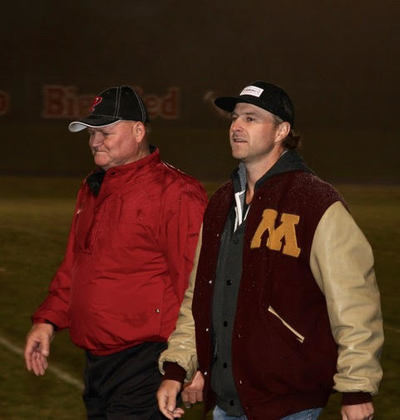

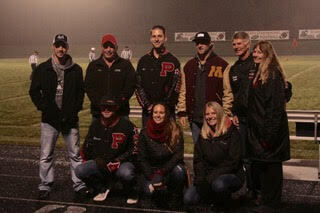





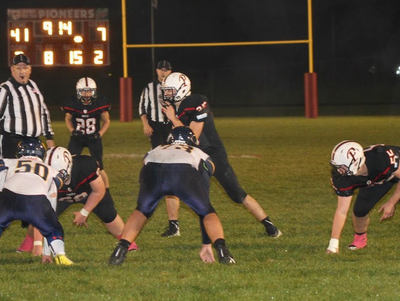
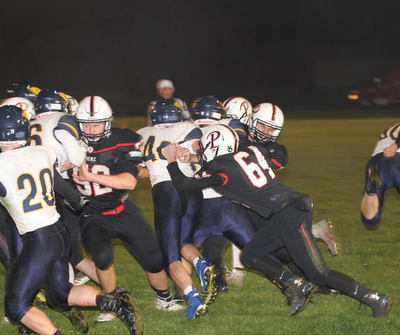
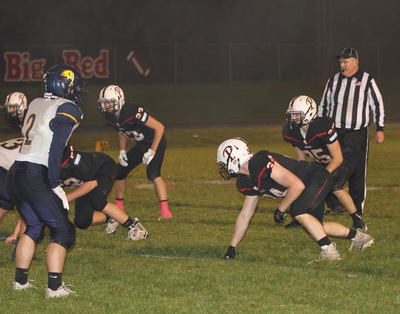
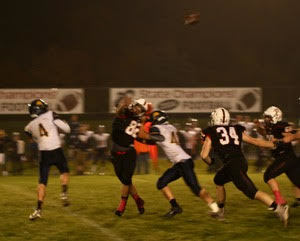

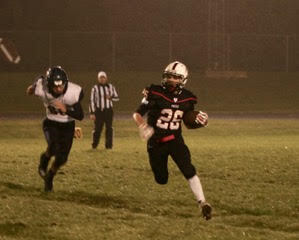



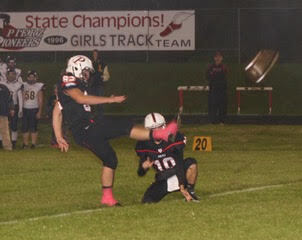
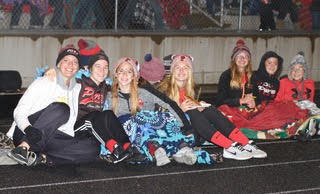
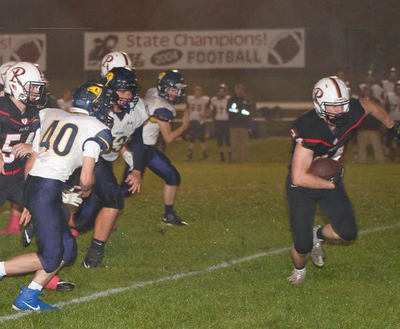
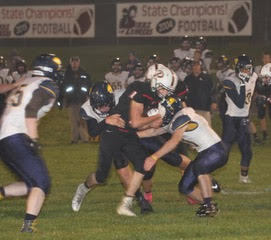
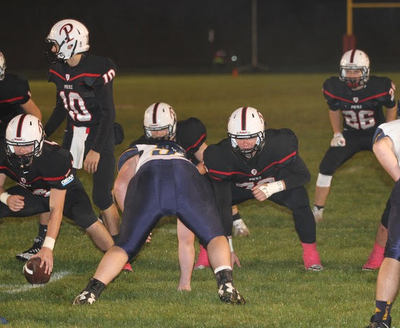
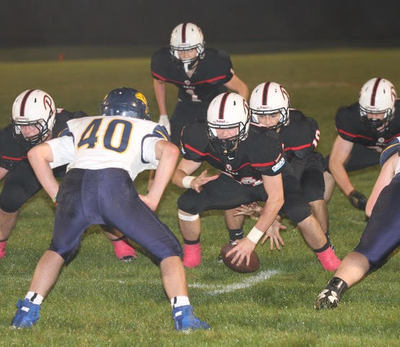
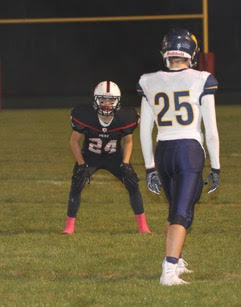
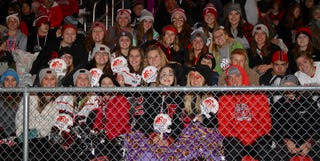

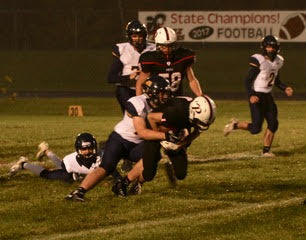
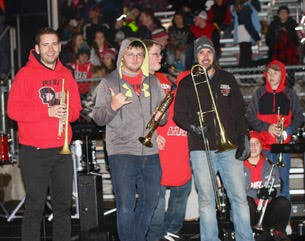
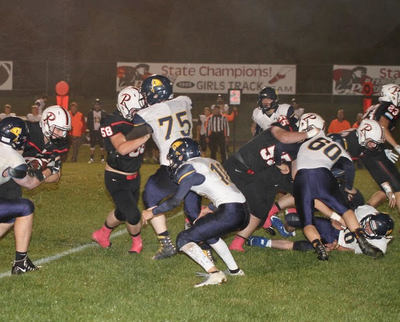










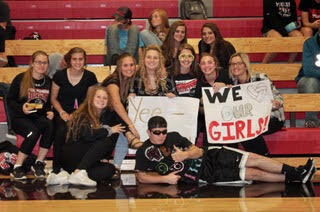








 Upcoming Events! October 4, 2018 Frank will be at the Hello Beautiful event, with the Shoppes of Little Falls, at the Falls Ballroom from 4:00 pm to 8:30 pm, signing books and answering questions about The I-94 Murders.
Upcoming Events! October 4, 2018 Frank will be at the Hello Beautiful event, with the Shoppes of Little Falls, at the Falls Ballroom from 4:00 pm to 8:30 pm, signing books and answering questions about The I-94 Murders. Address: Falls Ballroom 15879 Hwy 27., Little Falls, MNOctober 6, 2018 Speaking on The I-94 Murders. Grey Eagle Library . Grey Eagle, Minnesota. 11:00 amOctober 13, 2018 Frank will be signing and selling books at the 19th Annual Twin Cities Book Festival, Saturday October 13, 2018, at the Minnesota State Fairgrounds, from 10:00 a.m. to 5:00 p.m. FREE ADMISSIONOctober 16, 2018 The I-94 Murders book launch will occur at the Crossings Arts Alliance in Brainerd, with Frank Weber signing and selling books from 5:00 p.m. to 7:00 p.m., with a 5:30 p.m. presentation. The Crossing Arts Alliance is located at 711 Laurel St., Brainerd, MN 56401
October 17, 2018 Frank will be speaking to readers of The I-94 Murders at 3:30 p.m. at Pierz High School in the media center. Bloodsworth: A man unfairly convicted and sentenced to death is saved by DNA.
The I-94 Murders examines a new method of using DNA to solve crimes. The initial way DNA was used in criminal cases is perhaps best explained in a book written by Tim Junkin, titled Bloodsworth.
Kirk Bloodsworth, as an adolescent was already an expert trapper and oysterman. After high school he became a Marine (honorably discharged), and then had become a waterman (crabber & fisherman) on the Eastern Shore of Maryland. Kirk had no legal charges. He was the first person to be sentenced to death and then subsequently exonerated as a result of DNA.
 Dawn Hamilton Dawn Hamilton’s mother gave birth to her when she was 17. Dawn’s mother was a stripper, but a friendly older woman, named Casimara “Mercy” Sponaugle, spent a lot of time with Dawn. Mercy attempted to adopt Dawn, but her biological father didn’t let the adoption go through. Mercy had signed Dawn up for a camp, but the father had picked her up for a visit and was unaware of the camp. Mercy was the first person to look for Dawn when she couldn’t be accounted for. When Mercy couldn’t find Dawn, Dawn’s father took over. It was a 90 degree summer afternoon in Baltimore, and Dawn was looking for friends to play with. She had been told two children she knew were by the woods. An adult man offered to help her find them. Dawn was last seen alive walking with the man into the woods.
Dawn Hamilton Dawn Hamilton’s mother gave birth to her when she was 17. Dawn’s mother was a stripper, but a friendly older woman, named Casimara “Mercy” Sponaugle, spent a lot of time with Dawn. Mercy attempted to adopt Dawn, but her biological father didn’t let the adoption go through. Mercy had signed Dawn up for a camp, but the father had picked her up for a visit and was unaware of the camp. Mercy was the first person to look for Dawn when she couldn’t be accounted for. When Mercy couldn’t find Dawn, Dawn’s father took over. It was a 90 degree summer afternoon in Baltimore, and Dawn was looking for friends to play with. She had been told two children she knew were by the woods. An adult man offered to help her find them. Dawn was last seen alive walking with the man into the woods.
In 1984, a 9-year-old, Dawn Hamilton was found dead in a wooded area, near Rosedale, Maryland, having been sexually assaulted (anally and vaginally), choked by the assailant standing on her neck with his tennis shoe, and beaten with a rock.
How does a Kirk Bloodsworth get convicted of murder and sentenced to death, when he never actually met the victim? Five eyewitnesses stated that they had seen Kirk with the victim, while he continued to maintain his innocence throughout his trial and subsequent incarceration. The two witnesses relied on most heavy by the prosecution, were a 10-year-old boy and a 7-year-old boy. Both said they saw a man with curly blonde hair with the girl. Kirk had red hair and “lamb chop” side burns. Neither boy remembered the side burns. The 10-year-old described the man as 6’5”. The investigator asked a 6’3” police officer to step into the room. The 10-year-old said the man was smaller. Later in the courtroom, the boy pointed to Kirk as the man. (It is significant to note that this was after Kirk’s arrest and picture had been all over television.) The 7-year-old said the man was 6’0” tall, and failed to pick Kirk out of a line-up; however, his mother was allowed to testify that he later told her the correct man. (She was paid for her testimony.) An adult woman, their best witness, also reported seeing a man with curly blonde hair walking away from the woods. She said the man was 5’7”. She was unhappy with the sketch the 10-year-old created, but the police decided to go with it anyway. Kirk Bloodsworth is 6’5” with red hair. The actual killer, Kimberly Ruffner (male), was 5’6” and had curly blonde hair. A fourth woman initially reported she knew the man and gave the name of another male who lived in the neighborhood. However, she later indicated she had seen Kirk. A fifth witness initially stated she didn’t see the man, but heard him calling the girl. She later testified she saw Kirk. (Both of these women said at the second trial they had gone with the image of Kirk shown on TV. Kirk was convicted again at the second trial.)
 Kirk Bloodsworth This was a heavily publicized case and pressure was put on the police to solve it. Police were combing the area, and an officer came upon Kirk Bloodsworth sitting in a yard drinking a beer. Kirk had quit his job in Baltimore and left his wife as a result of her substance abuse and her failing to come home at night. Kirk had told a friend, he had “done something bad.” Kirk indicated he was nervous because he had marijuana he hid in his shoe when he saw the officer coming. Kirk had never been arrested for anything. The officer went back and told investigators that Bloodsworth seemed unnaturally nervous, so they decided to pull him in for questioning. The investigators set girl’s underwear, shorts and a rock on a table in the room to see if Kirk would have a reaction to them. (They had heard the killers will react to material from the murder being placed in the interview room.) Kirk didn’t react to them.
Kirk Bloodsworth This was a heavily publicized case and pressure was put on the police to solve it. Police were combing the area, and an officer came upon Kirk Bloodsworth sitting in a yard drinking a beer. Kirk had quit his job in Baltimore and left his wife as a result of her substance abuse and her failing to come home at night. Kirk had told a friend, he had “done something bad.” Kirk indicated he was nervous because he had marijuana he hid in his shoe when he saw the officer coming. Kirk had never been arrested for anything. The officer went back and told investigators that Bloodsworth seemed unnaturally nervous, so they decided to pull him in for questioning. The investigators set girl’s underwear, shorts and a rock on a table in the room to see if Kirk would have a reaction to them. (They had heard the killers will react to material from the murder being placed in the interview room.) Kirk didn’t react to them.Kirk was ultimately released and proceeded to drink excessively, frustrated that he was being accused of murdering a child, when he would never hurt a child. A woman who was a friend with one of the investigators was asked to listen to him, to see what he said. Kirk commented, “They think I killed that girl with a rock.” That statement resulted in Kirk being incarcerated for the next nine years. Investigators argued that only the murderer could have known the girl was killed with a rock. Kirk said he just assumed this, being the rock was sitting with her clothes.
A man’s tennis shoe was found in the home Kirk was visiting, with a similar shoe print to the one on the girl’s neck. An investigator reported the tennis shoe was size 10 ½. Kirk wore size 10 ½. However, the investigator later revealed the tennis shoe was 10 ½ inches long and wasn’t a size 10 ½ . The shoe was actually a size 8. Still, jurors who convicted Kirk stated it was too coincidental that a similar shoe was in the home. (It was never determined that this was the shoe. It was a popular brand.)
And then investigators found out Kirk had said that he had, “done something bad.” While this statement was used, the woman he said it to was never allowed to explain in court that she knew it was in reference to leaving his wife and quitting his job. When Kirk was asked about it, he was nervous and said he was supposed to buy his wife a taco salad. This poor explanation was used in each court hearing. The prosecutor showed the brutal pictures of the girl’s murder to the jury, generating an attitude that someone needed to pay for this.
Kirk’s defense attorney wanted to have the body fluid evidence on the girl’s clothing examined. The medical examiner reported there was sperm present. Even though this was before DNA testing, they could still use it to identify the killer’s blood type. However, when the evidence was turned over to the FBI, they reported there was no sperm on the clothing. Eight years later, not only did a private lab find sperm on the clothing, they pointed out that the FBI lab had taken a marker and drawn an arrow to it. However, the FBI apparently never tested it. Kirk and his attorneys didn’t know this at the time of his trials, and were subsequently told they had no evidence to prove Kirk wasn’t the killer. But think about how backwards this case had become. There was no physical evidence connecting Kirk Bloodsworth to the crime, and despite that, he was sentenced to death row, simply because he couldn’t prove he wasn’t he killer.
Ironically, Kirk had an alibi. He had been with three friends, who were all addicts. All reported they remembered the day because the cat had urinated on Kirk’s blanket when he was sleeping on the couch. Each witness was determined not credible by the prosecutor, Ann Brost. She asked them to identify where they were at on random other days in court, and they weren’t able to say. Keep in mind when a friend is accused of murder, you are more likely to remember that day.
Kirk had a tough time in prison as a man believed to have raped and murdered a child. At night, prisoners would routinely walk by and toss cups of urine into his cell. He was 22-years-old at the time he was wrongfully convicted, and he served nine hard years in the Metropolitan Transition Center (MTC), formerly the Maryland Penitentiary, in Baltimore City. It opened in 1811, and is the oldest operating correctional institution in the western world. Cockroaches rained down from the ceiling at night.
Sadly, a retrial was able to raise serious questions about the eyewitness testimony, but it still resulted in a second conviction. The retrial exemplified the “gaminess” of court. The judge received a call from a mental health facility indicating a sex offender had come to their facility on the day Dawn was murdered with scratches all over his body, meeting the description released by the police. The prosecution had been aware of this for two years before the retrial and hadn’t told the defense until the beginning of the second trial. Kirk’s attorney had gone to the facility, but the people he needed to talk to were on vacation. The defense attorney thought he could win the retrial without this information. The judge admonished the prosecution because court should be a search for the truth rather than a game people win. The judge admonished the defense for not asking for a postponement to examine the evidence. He believed the defense had saved the information to use for a mistrial, and he wasn’t going to let the court be manipulated. Kirk was the one who paid the price for this. The judge convicted Kirk again, and he was out of appeals. DNA n 1992, while in prison, Kirk Bloodsworth read an account of how DNA testing had led to the conviction, in England, of Colin Pitchfork in the killings of Dawn Ashworth and Lynda Mann. This resulted in the use of DNA to gain the exoneration of an earlier suspect in the case, who had falsely confessed to murder. In England, they DNA tested 3,000 men in the community over a period of years before they found the match. After being confronted with the evidence, Pitchfork admitted killing both girls. Hoping to prove his innocence, Bloodsworth pushed to have the biological evidence against him tested by this new forensic technique.
Bloodsworth spoke to attorney, Robert E. Morin, and Maryland public defender, Stephen E. Harris, and asked them for help. He had no money to pay them and no appeals left. Bob Morin took on the case and paid for DNA testing out of his pocket, simply because he became an attorney to help innocent people, and every attorney who worked with Kirk believed he was innocent.
Initially, the available evidence in the case — traces of semen in the victim's underwear — was thought to have been destroyed; however, it was eventually located in a paper bag in the judge's chambers. The prosecutors were so convinced of Bloodsworth’s guilt; they agreed to allow testing of the past evidence only if they were allowed to hold a public announcement of the findings. DNA testing was in its infancy, and it couldn’t prove innocence with certainty at the time. It could narrow the results down to 10% of the population. Kirk’s attorney advised him that he could still be innocent, but if he was in that 10% he would look guilty and the sample would be destroyed. Kirk told them to run the test, he couldn’t take anymore prison.
The lab had the sample for eight months before the results were returned. Kirk recalled having fallen asleep in the prison library that day and had dreamt of being free on a lake, with his mom waving to him from shore. His mother had died during Kirk’s incarceration of what he attributed to a broken heart. Kirk had converted to the Catholic faith in prison and felt that his mother now knew the truth and may be guiding him. When he woke up he had a note to call his attorney. The test results were in.
The testing proved that the semen did not match Bloodsworth's DNA profile. Sandra A. O’Connor was the County Attorney, although her assistant Ann Brost, handled the case. They said they needed to run their own tests before Kirk could be released. This time FBI testing indicated the lab was correct. Bloodsworth was not the killer. In 1993, Bloodsworth was released after more than nine years in prison.
Though released from prison, Bloodsworth was not formally exonerated. Sandra A. O’Connor, formerly dismissed the charges stating there was “insufficient evidence” to mount a new trial. She would not say he was innocent and offered no apologies. The public didn’t understand DNA at the time and assumed Kirk was released on a technicality. So even though Kirk was free, he was still treated as if he was guilty. The prosecutor now had the DNA of the killer, but didn’t enter it into CODIS (even though it was now up and running), the national DNA system, for another decade. Kirk asked them to, as he wanted it to prove his innocence once and for all. Prosecutor Ann Probst argued that they didn’t have the funding.
In 2003, nearly a decade after Bloodsworth's release, prisoner DNA evidence added to state and federal databases resulted in a match to the real killer, Kimberly Shay Ruffner. A month after the 1984 murder, Ruffner had been sentenced to 45 years for an unrelated burglary, attempted rape and assault with intent to murder an adult woman. He had been incarcerated in a cell one floor below Bloodsworth's own cell. During one interaction, Ruffner told Kirk he knew exactly where the murder of that girl was committed. Kirk never considered at the time that Ruffner was the one who had killed her. In a 2009 guest lecture at Florida Atlantic University, Bloodsworth said that he and Ruffner sometimes spotted each other during workouts.
In light of the new DNA evidence, Ruffner was charged in Maryland for the rape and murder of the girl; in 2004, he pleaded guilty to the 1984 murder and was sentenced to life imprisonment. Ruffner had been charged twice previously, but not convicted, of abusing children. He had been found not guilty of raping a child and was released from jail less than one month before raping and murdering Dawn. Ruffner admitted he had used the drug PCP the night before the murder. He had beaten the girl with a rock and stepped on her neck after anally raping her and sticking a branch into her vagina. Ruffner’s conviction resulted in the full exoneration of Bloodsworth in 2004. It is significant to note that Bloodsworth’s life was saved in prison during an attack by a Black Muslim prisoner who didn’t know Kirk. When Kirk asked him why he helped a man he didn’t know, the man simply told Kirk it was the right thing to do. Life After Exoneration “If it could happen to me, it could happen to anybody,” Bloodsworth has said many times. Shortly after his exoneration, Bloodsworth began avidly fighting for others who had been wrongly convicted. Bloodsworth helped gain support for the Innocence Protection Act (IPA) of 2003. Among other federal funding initiatives, the IPA established the "Kirk Bloodsworth Post-Conviction DNA Testing Program," intended to help states defray the costs of post-conviction DNA testing. Over 100 death row inmates have been exonerated as a result of DNA testing. Bloodsworth helped gain repeal of the death penalty statute in Maryland.
He published Bloodsworth, a book about his wrongful conviction experience, in 2004. A couple of years ago, he began working as the Advocacy Director for Witness to Innocence, a Philadelphia-based coalition of death row exonerees who work to end capital punishment.
As an aside, biochemist Kary Mullis, was instrumental to resolving this case. He created a process called Polymerase Chain Reaction, which was a technique that allowed DNA to reproduce in a test tube. This enabled investigators to use DNA samples in cases where they didn’t previously have enough DNA to get a useable sample. Mullis won a Nobel Prize for this in 1993.
Prosecutor Anne Brost met with Kirk personally after the correct killer had been identified. Kirk told her he had hated her for 20 years, for calling him a rapist and a child killer, but he doesn’t hate her anymore because she was willing to meet with him personally and tell him the truth. Kirk bought a boat he called “Freedom” and returned to life as a “waterman.”
This song is for all of you fans of “Better Call Saul.” This song was written and recorded by a married couple C. Carson Parks and Gaile Foote. They created the version everyone imitates. They knew to make money they would have to have someone famous perform it, so they gave it to Frank Sinatra and he did it with his daughter Nancy, and made it a #1 hit.
Thanks for listening,
Frank
Pierz Homecoming week. Pierz football has only lost 1 game in the past 3 ½ years, which is pretty impressive when you consider they are one of the smallest schools in their class.



















































Published on October 07, 2018 09:40
September 25, 2018
The I-94 Murders Book Opening Success!


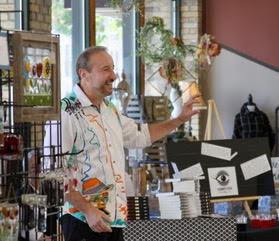

 I can’t thank people enough for the wonderful book opening at the Shoppes of Little Falls on Saturday. The seats were filled, Scotty Stocco’s food was amazing, the Blood Orange IPA Starry Eyed Brewery made for the mystery event was a big hit, and the Shoppes staff (who are all so helpful) made the event run as smooth as glass. We had coffee from Reality Roasters, delivered by the Black & White Café (the gourmet restaurant next door). The best part of the event was the great people who attended and shared conversations. Thank you!It was a wild week for me, which involved testifying as an expert witness, speaking to packed rooms at both the Champlin and Rosemount libraries, and shipping out boxes of books for online orders.
I can’t thank people enough for the wonderful book opening at the Shoppes of Little Falls on Saturday. The seats were filled, Scotty Stocco’s food was amazing, the Blood Orange IPA Starry Eyed Brewery made for the mystery event was a big hit, and the Shoppes staff (who are all so helpful) made the event run as smooth as glass. We had coffee from Reality Roasters, delivered by the Black & White Café (the gourmet restaurant next door). The best part of the event was the great people who attended and shared conversations. Thank you!It was a wild week for me, which involved testifying as an expert witness, speaking to packed rooms at both the Champlin and Rosemount libraries, and shipping out boxes of books for online orders.

 Frank speaking at Champlin Library
Frank speaking at Champlin Library

 Frank Speaking at Rosemount Library
Frank Speaking at Rosemount LibraryI have three events in Minnesota before I’m off to Maryland (Baltimore and Leonardtown) to talk about The I-94 Murders.October 16, 2018 The I-94 Murders book launch will occur at the Crossings Arts Alliance with Frank Weber signing and selling books from 5:00 p.m. to 7:00 p.m., with a 5:30 p.m. presentation. The Crossing Arts Alliance is located at 711 Laurel St., Brainerd, MN 56401October 6, 2018 Speaking on The I-94 Murders at the Grey Eagle Library in Grey Eagle, Minnesota. 11:00 a.m.October 13, 2018 Frank will be signing and selling books at the 19th Annual Twin Cities Book Festival, at the Minnesota State Fairgrounds, from 10:00 a.m. to 5:00 p.m. FREE ADMISSION Was William Sickert Jack the Ripper? Walter Richard Sickert (May 31, 1860 – January 12, 1942) was an English painter and printmaker in London. He is considered a prominent figure in the transition from Impressionism to Modernism in English art.
Patricia Cornwell, Medical Examiner and Mystery Author, wrote a very good book explaining why she believes William Sickert was Jack the Ripper. His father was an artist who wrote some of the Punch and Judy skits. (If you’ve ever seen these puppet skits, they were typically weirdly violent. The “humor” was in hitting the spouse or throwing a child out the window.) His father had a very demeaning attitude about women, which he seemed to have passed on to his son, William.
 William Sickert was described as a handsome and successful artist in London. He painted prostitutes and a variety of rather morbid scenes. He had one painting titled ‘Jack the Ripper’s Bedroom.’ He told the woman he sold it to, that he knew Jack the Ripper had stayed in this bedroom for a period of time. A later, intensive study of the painting revealed that the apartment was a place William Sickert had lived for two years.
William Sickert was described as a handsome and successful artist in London. He painted prostitutes and a variety of rather morbid scenes. He had one painting titled ‘Jack the Ripper’s Bedroom.’ He told the woman he sold it to, that he knew Jack the Ripper had stayed in this bedroom for a period of time. A later, intensive study of the painting revealed that the apartment was a place William Sickert had lived for two years. After Patricia Cornwell’s first book, in 2002, a number of public dismissals were made of her claim, indicating that William Sickert was in France when some of the murders occurred. Patricia Cornwell was able to prove that, even though William Sickert claimed he was in France, he was in England. Sickert’s art work was dated and the location was listed. William Sickert made drawings in England, near White Chapel, at the time he was supposedly in France. Further, there is not legitimate evidence that he actually was in France, beyond his word. She wrote an additional book in 2017 once again identifying Sickert as “the Ripper.”
As a child, William had three surgeries on his penis by the age of 5. You can imagine this was a painful process in the late 1800s when this occurred. Often anesthesia was not used, and nurses held down the child. His third surgery occurred in England, at a time when he spoke only German, and his mother did not come to England with him. His ability to consummate a relationship is uncertain. As an adult, William Sickert had three marriages but often did not live with his wives or stay home at night.
White Chapel was a poor area of London, where 1/5 of the population was homeless. William Sickert frequented the city dance halls in this area. It was not uncommon for Sickert to draw macabre pictures of stabbing and dismemberment when the women and girls were performing in dance halls. He had made comments suggesting that Jack the Ripper may be doing the community a favor by eliminating sinful prostitutes who were “ten times worse than the men.”
Perhaps the most compelling evidence is that analysis of the “Jack the Ripper letters” has proved that some of the letters, allegedly written by Jack the Ripper, are from the same small bundle with which William Sickert wrote letters to other people. Two of the Ripper letters, and three letters Sickert wrote to friends, were written on water marked paper that was part of a pack of 24 pages. While they were unable to find conclusive DNA of William Sickert, they were able to extract DNA from his artwork, which they believe to be Sickert’s, and compare it to DNA taken off one of the letters. It was not enough to say with 100% certainty. They were able to say that both samples came from the same 1% of the population. Further, it was common knowledge that William Sickert walked White Chapel frequently at night. In addition, he had a number of hidden “art studios,” which he kept locked and did not even inform his spouse about, throughout White Chapel.
The Jack the Ripper letters were dismissed, initially, by investigators, as they did not believe an actual killer would write letters to taunt the police. They simply didn’t understand psychopathic personalities like we understand them today. The person who wrote the letters disguised his handwriting and was well educated, despite often attempting to appear uneducated. He deliberately misspelled simple words, but used words like “conundrum” and “victims” in his letters. Uneducated people in England at the time did not use the word “victim.” There was some pretty good evidence suggesting that at least some of the letters were from the killer. The killer sent them the partial left kidney of one of the victims. While they did not have the DNA evidence to match the kidney, the victim was missing part of her left kidney, and the piece they received indicated the woman suffered from Bright’s Disease, which was consistent with the victim.
There are a number of factors that have led to misguided theories regarding Jack the Ripper. One of the problems the police had in London at the time is that they were expected to walk a beat. It was a specifically designed walking trail they were expected to cover in a certain amount of time. This not only limited their ability to investigate, it also made criminals very aware of how long it would be before the police officer would be at a location. An early theory was that Jack the Ripper was left-handed because the women’s throats were cut from left to right. However, the early victims were prostitutes, and in England at that time, men had sex with prostitutes from behind. Prostitutes would pull up their dresses and bend over forward. So, a right-handed person cutting the prostitutes’ throats would cut from left to right. It was also theorized that Jack the Ripper was possibly a doctor or a butcher, because as the murders continued, greater cutting and dissection occurred. In one situation, a woman’s uterus was removed. It is important to note that it was not surgically removed. Everything in the area was cut out. Jack the Ripper stabbed and cut at his victims’ genital areas after cutting their throats. Other times, half a uterus was removed or the woman was disemboweled. Records indicate that William Sickert had bought bow knives, like the knives used to cut the women’s throats. He reported he used them to cut up paintings that he felt were failures. He also carried a bag with him as he walked through White Chapel at night, which people believed, at that time, were to store his painting materials. In some of the victims’ cases, brush strokes were made with the knife. One victim in particular had a grid drawn out on the victim’s body. William Sickert, as a painter, often used a grid when painting, to make certain that the person he was painting was in direct proportion to the person he was studying.
As a young man, William Sickert was an actor, and he enjoyed dressing up in characters. He particularly liked dressing up as a poor person or an old man. Some of his paintings feature women with black lines on their necks. This is not a necklace. It is simply a black line where it appears their throat may have been cut. There was a rumor, still believed by some, that someone in royalty was Jack the Ripper, and the prostitutes had been murdered to cover up a secret. Patricia Cornwell traced the origin of this rumor back to William Sickert.
William Sickert was an apprentice to the famous British painter, Whistler. Whistler later described William Sickert as a “treacherous man.” After one of the murders, a man in white coveralls was seen close to the scene. William Sickert wore white coveralls to paint.
At a hotel where William Sickert stayed, there is a drawing in the guestbook of a woman whose breasts and nipples are drawn beneath her clothing and a man leering at her with the comment, “Only by Jack the Ripper.” This same person appears to have vandalized the guest book, correcting the grammar and spelling of notes written by guests (a habit of William Sickert). The guestbook had a variety of caricatures and sayings in it that are the same as characters in sayings in the Jack the Ripper letters to the police.
William Sickert was asked to resign at a newspaper, where he critiqued art, as a result of his being overly critical. Shortly after he resigned, a man dressed as a soldier appeared to one of the newspaper boys and told them there was another Jack the Ripper body located at a specific street address. The newspaper immediately sent staff to cover the story. There was no body there. Two days later, a woman was murdered, Jack the Ripper style, at that exact location.
William Sickert painted a portrait of Queen Elorence, a popular dance hall performer in the White Chapel area. She disliked it and responded she would not even use it for a screen to keep the wind out. There is no clear record of what happened to her; although, she disappeared from records shortly after.
 “The end of an Act” Sickert painting from 1885 In later Jack the Ripper letters, he wrote that he was going to kill children and do worse than he did with the women. Subsequently, there was a boy found with his throat cut, a girl found who had been garroted, and a second boy who was stabbed to death. What was significant about the second boy, is that Jack the Ripper wrote that he will take their heart. The boy’s heart was placed under his chin. Despite the letters, these homicides were not attributed to Jack the Ripper until 100 years later. An acquaintance of William Sickert wrote he was an extreme of refinement, but he also enjoyed living in squalor, as if he was two extremes. This acquaintance also said William Sickert frequently told him he lived in Jack the Ripper’s house. Sickert had told at least half-a-dozen people that he knew the name of Jack the Ripper and, at one point, had written it in pencil in a book called Casanova’s Memoirs, but he has since lost the book and he could not remember the name. William Sickert was known for his amazing memory and for being obsessed with murder. It is pretty unlikely that he would not remember the name.
“The end of an Act” Sickert painting from 1885 In later Jack the Ripper letters, he wrote that he was going to kill children and do worse than he did with the women. Subsequently, there was a boy found with his throat cut, a girl found who had been garroted, and a second boy who was stabbed to death. What was significant about the second boy, is that Jack the Ripper wrote that he will take their heart. The boy’s heart was placed under his chin. Despite the letters, these homicides were not attributed to Jack the Ripper until 100 years later. An acquaintance of William Sickert wrote he was an extreme of refinement, but he also enjoyed living in squalor, as if he was two extremes. This acquaintance also said William Sickert frequently told him he lived in Jack the Ripper’s house. Sickert had told at least half-a-dozen people that he knew the name of Jack the Ripper and, at one point, had written it in pencil in a book called Casanova’s Memoirs, but he has since lost the book and he could not remember the name. William Sickert was known for his amazing memory and for being obsessed with murder. It is pretty unlikely that he would not remember the name. If William Sickert was not Jack the Ripper, a variety of bizarre and macabre events occurred close to him. A man down the street from Sickert was accused of poisoning his wife after his wife had disappeared. The man claimed his innocence. After his arrest, they found the torso of a woman in the home. Her hands and head had been removed. The man was executed. A later thorough examination of the torso revealed that it wasn’t the man’s wife. The woman was never identified. Sickert painted macabre pictures of women. For example, while one picture is of a woman singing, close examination of her face suggests she is screaming in fear.
There were a variety of mistakes made by investigators in the Jack the Ripper case. For example, it was suggested, at one scene, to get bloodhounds to trace the trail of the killer. It was determined not to, because the blood all belonged to the victim. It is significant to note that bloodhounds do not sniff blood, they sniff scents. At one point, the police announced that the killings were over, because the man they suspected committed suicide. There really is no strong evidence supporting that this man had committed the murders. He was a depressed man who never acknowledged the killings. Further, the killings continued; however, the police no longer attributed them to Jack the Ripper. The police dismissed letters from Jack the Ripper that were coming to the police, which were very detailed and, at times, outlined what occurred in future murders, as coming from a crack pot, because they believed that no guilty person would write a letter to the police. We now know, of course, that is incorrect.
The arguments for Sickert’s innocence are first that he contributed significantly to the movement of impressionistic art in England, so people do not want his name defamed. The second argument is that William Sickert wrote letters that were dated, indicating he was in another place at times when murders were committed. The problem with this argument is that it is dependent on Sickert’s honesty. The envelopes for the letters were destroyed. The exact length of time it took for a letter to get from one location to another was also variable. Further, there is evidence that William Sickert was not at some of the places he claimed to be on the dates written in the letters. Further, there is no evidence of William Sickert painting something he did not directly observe, so the fact that he painted macabre murder scenes at times is concerning. The Camden Murders painting featured a naked woman sprawled on an iron bedstead, while a man sits next to her. Sickert kept an iron bedstead in his painting studios. Once, when he had guests over, he acted out Emily Dickert’s murder (one of the Jack the Ripper victims) on the bed in front of guests. It was later printed that William Sickert’s paintings of the Jack the Ripper murders were so good, because he was allowed to step in and carefully observe the scene after Emily’s murder. It was only decades later when people began to consider, “What was he doing there?”
It is interesting to note that William Sickert’s ex-wife, Helen, changed her last name back to her maiden name and requested that if she die, an autopsy be performed. While the police did not take the brunt of the Jack the Ripper letters seriously, there was some pretty good evidence suggesting that at least one of the letters was from the killer. The killer sent them the partial left kidney of one of the victims. While they did not have the DNA evidence to match the kidney, the victim was missing part of her left kidney, and the piece they received indicated the woman suffered from Bright’s Disease, which was consistent with the victim. One of the Jack the Ripper victims, Mary Kelly, was last seen with a man carrying a satchel with a strap on it. In addition, he had a red handkerchief, which is something William Sickert always carried with him. The witness indicated that he felt the man was respectable by appearance and described him as 5’6” in height. William Sickert was 5’7”. This witness was considered a respectable and sober witness, and notes were taken that they should take his statement seriously. The degree of brutality of the Jack the Ripper slayings is abhorrent. All of Mary Kelly’s organs, except for her brain, were removed. In one of the letters, Jack the Ripper wrote that he was frustrated that he lost his knife. It is significant to note, a bloody knife (referred to as a cookery), similar to the one used in the Jack the Ripper murders, was found near Sickert’s mother’s home.
It is interesting to note that dismembered women’s body parts continued to be found in the White Chapel area after what was considered the last of the Jack the Ripper murders. There was an escalation in the Jack the Ripper letters, where he wrote things such as, “I’m trying my hand at disjointing.” The escalation letters may indicate the Jack the Ripper’s frustration for no longer getting credit for his murders. Many of the Ripper letters were not kept or left with a variety of sources. Much of the evidence regarding the Jack the Ripper case has disappeared, including autopsy reports and crime scene write-ups. They may have been kept by people as keepsakes or sold. After the murders, people paid money to step in and view the crime scenes. A close friend of Sickert’s wife wrote of William, “He was self-centered and completely devoid of empathy.” Sickert wrote of his divorce from his first wife, Ellen, “It was like having a thumb screw removed.” Sickert once commented to a friend, “At least you feel.” William Sickert sought out women he could not only dominate, but who could also support him financially. His wives were described as enablers.
 La Giuseppina, the Ring (1903–1905) Sickert died in Bath, Somerset in 1942, at the age of 81. He had spent much time in the city in his later years, and many of his paintings depict Bath's varied street scenes. He had been married three times: from 1885 until their divorce in 1899 to Ellen Cobden, a daughter of Richard Cobden; from 1911 until her death in 1920 to Christine Angus; and from 1926 until his death to the painter Thérèse Lessore.
La Giuseppina, the Ring (1903–1905) Sickert died in Bath, Somerset in 1942, at the age of 81. He had spent much time in the city in his later years, and many of his paintings depict Bath's varied street scenes. He had been married three times: from 1885 until their divorce in 1899 to Ellen Cobden, a daughter of Richard Cobden; from 1911 until her death in 1920 to Christine Angus; and from 1926 until his death to the painter Thérèse Lessore.Sickert's sister was Helena Swanwick, a feminist active in the women's suffrage movement. She described William in unkind terms in her personal writings and wrote of him once making her stir a caldron naked as a child to act out McBeth.
He preferred to paint not from nature but from drawings or, after the mid-1920s, from photographs or from popular prints by Victorian illustrators. After transferring the design to canvas by the use of a grid, Sickert made a rapid underpainting using two colors, which was allowed to dry thoroughly before the final colors were applied. He experimented tirelessly with the details of his method, always with the goal.
Sickert often professed his distaste for what he termed the "beastly" character of thickly textured paint. In an article he wrote for The Fortnightly Review in 1911, he described his reaction to the paintings of Van Gogh: "I execrate his treatment of the instrument I love, these strips of metallic paint that catch the light like so many dyed straws ... my teeth are set on edge".
Nonetheless, Sickert's paintings of the Camden Town Murder series of c. 1906–1909 were painted in heavy impasto and narrow tonal range, as were numerous other obese nudes in the pre-World War I period in which the fleshiness of the figures is connected to the thickness of the paint. Jack The Ripper
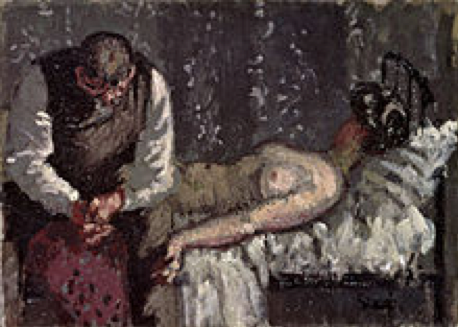 Walter Sickert, The Camden Town Murder, originally titled, What Shall We Do for the Rent?[, alternatively, What Shall We Do to Pay the Rent,1908 Sickert took a keen interest in the crimes of Jack the Ripper and believed he had lodged in a room used by the notorious serial killer. Although for over 70 years there was no mention of Sickert's being a suspect in the Ripper crimes, in modern times three books have been published whose authors maintain that Sickert was Jack the Ripper or his accomplice.In 1990, Jean Overton Fuller, in her book Sickert and the Ripper Crimes, maintained that Sickert was the killer.In 2002, crime novelist Patricia Cornwell, in Portrait of a Killer: Jack the Ripper—Case Closed, maintained that Sickert was Jack the Ripper. Cornwell claimed she was able to scientifically prove that mitochondrial DNA from one of more than 600 Ripper-letters sent to Scotland Yard and mitochondrial DNA from a letter written by Sickert belong to only 1% of the population. In 2017, Cornwell published another book on the subject,
Ripper: The Secret Life of Walter Sickert
in which she uncovers what she believes to be further evidence for Sickert's guilt. Thanks for listening,
Walter Sickert, The Camden Town Murder, originally titled, What Shall We Do for the Rent?[, alternatively, What Shall We Do to Pay the Rent,1908 Sickert took a keen interest in the crimes of Jack the Ripper and believed he had lodged in a room used by the notorious serial killer. Although for over 70 years there was no mention of Sickert's being a suspect in the Ripper crimes, in modern times three books have been published whose authors maintain that Sickert was Jack the Ripper or his accomplice.In 1990, Jean Overton Fuller, in her book Sickert and the Ripper Crimes, maintained that Sickert was the killer.In 2002, crime novelist Patricia Cornwell, in Portrait of a Killer: Jack the Ripper—Case Closed, maintained that Sickert was Jack the Ripper. Cornwell claimed she was able to scientifically prove that mitochondrial DNA from one of more than 600 Ripper-letters sent to Scotland Yard and mitochondrial DNA from a letter written by Sickert belong to only 1% of the population. In 2017, Cornwell published another book on the subject,
Ripper: The Secret Life of Walter Sickert
in which she uncovers what she believes to be further evidence for Sickert's guilt. Thanks for listening, Frank
Pierz wins wild one over Melrose, with 6 touchdowns (3 each)
scored in the 4th quarter.
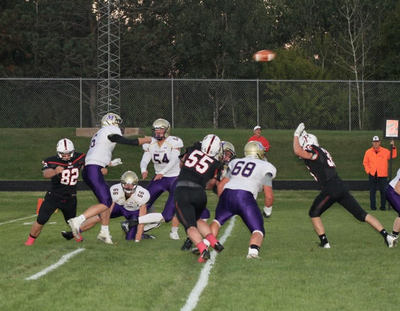


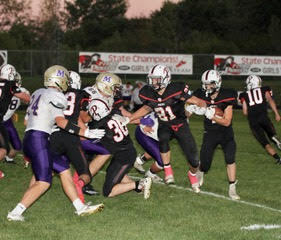

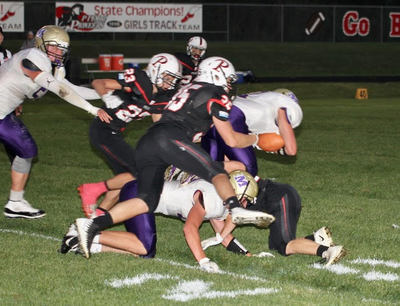
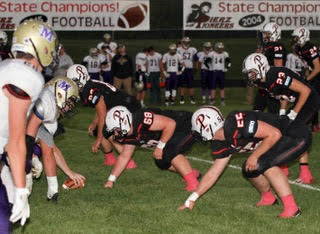


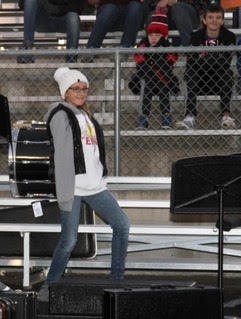
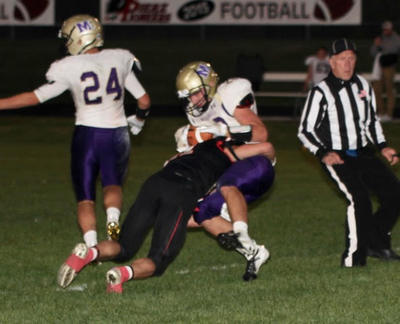

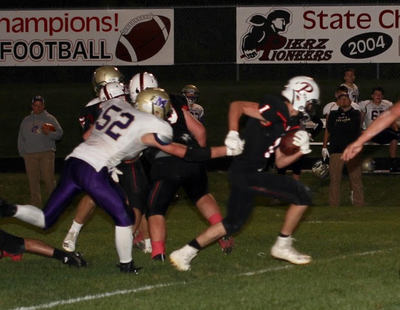
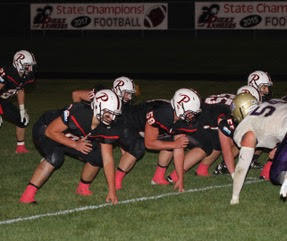
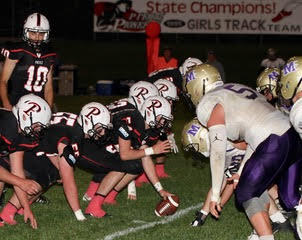
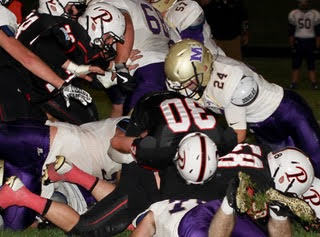
Published on September 25, 2018 07:36
September 16, 2018
Book Opening Next Saturday at Shoppes of Little Falls
 Upcoming Events:
Upcoming Events:September 18, 2018: Presenting on Murder Brook to "The Friends of the Champlin Library" mystery book club.
Where: Champlin Library
When: 6:30 p.m.
September 20, 2018: "Meet the Author" event. Frank will be selling his books, Murder Book and The I-94 Murders, at the event. Frank will present on his work, with emphasis on his writing style, philosophy, and motivations.
Where: Robert Trail Library in Rosemount, MN
When: 6:30 p.m. to 8:00 p.m.
September 22, 2018: Book opening event! See a more detailed description of the event below.
Where: Shoppes of Little Falls
When: 12:00 p.m. to 3:00 p.m. (speaking on The I-94 Murders at 1:00 p.m.) The I-94 Murders is now available at the Shoppes of Little Falls. You can return with your book to the book opening next Saturday, September 22, 2018, to have it signed. Frank will be at the Shoppes signing books from 12:00 p.m. to 3:00 p.m., and will speak on The I-94 Murders at 1:00 p.m. Hors d’oeuvres will be provided by award winning chef, Scotty Stocco, and Starry Eyed Brewery tap beer will be served, including a special “blood orange” IPA for the event.
 This week’s Morrison County Record features an article titled, “Weber follows up ‘Murder Book’ with new murder mystery.” In case you feel you know the whole story, I need to tell you; in this book, it’s not the bad cop.
This week’s Morrison County Record features an article titled, “Weber follows up ‘Murder Book’ with new murder mystery.” In case you feel you know the whole story, I need to tell you; in this book, it’s not the bad cop.(That's a cliche in murder mysteries - and an unusual scenario in real life. Even in the Golden State Killer case, he retired after working in a distribution center for a grocery store for 27 years. He worked as a cop for only three years.)
So if you’re looking for the cop in this book, like the real case, it’s not what the killer is doing. That’s too easy. You’re going to have to work to solve it. The following is an article written by Becky Flansburg about The I-94 Murders The I-94 Murders
By Frank Weber
(Author of Murder Book)
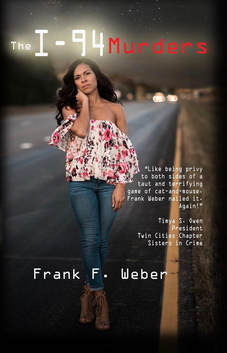 "It was so easy for people to be evil, and it was so hard to stop it.
"It was so easy for people to be evil, and it was so hard to stop it.Book Summary
In The I-94 Murders, Investigator Jon Frederick returns in a search to uncover the identity of a killer creeping through communities along I-94 in Minnesota, targeting couples who store their fetish photos online. Driven to find the killer, Detective Frederick must use his wits, old-school police work, cutting-edge forensics and his own specially created algorithm to identify and catch a cunning criminal who is preying on the fetish community. This mysterious killer, known only as Culhwch, leads readers on a terrifying journey of demented thinking, sexual desire, cipher-filled messages and a trail of bodies.
Book DetailsPublished: September 18, 2018Page Count:307 PagesGenre: FICTION / True Crime/ThrillerISBN: 978-1-68201-093-8Format: 6x9 black & white paperbackSRP: $15.00Available: Amazon, Northstar Press, and Barnes&Noble
In Praise of Frank Weber
http://www.startribune.com/reviews-murder-book-by-frank-f-weber-and-do-not-become-alarmed-by-maile-meloy/450814713/
“It’s always refreshing to find an author who knows his material. Minnesota writer Frank Weber has stayed close to home with his crime thriller about a freshman investigator with the state’s Bureau of Criminal Apprehension. The BCA agent, Jon Frederick, grew up in Pierz, Minn. (as did the author), a small community of farmers, big Catholic families and, evidently, all of the pent-up suspicions and baggage a small town can offer. … It’s a suspenseful read that picks up substantially in the final chapters.” COLLEEN KELLY, Minneapolis Star Tribune
https://www.twincities.com/2018/01/21/cold-weather-mysteries-from-minnesota-authors-are-great-companions/
“This is a fast-paced, appealing book with plot and character complementing each other. Since the author is a forensic psychologist, he knows the nature of criminals and those who want to catch them.” Mary Ann Grossmann, St. Paul Pioneer Press
https://mnprairieroots.com/2017/05/05/set-in-central-minnesota-a-psychological-thriller-draws-my-personal-interest/
“Throughout the story, Weber also includes powerful statements that are especially credible in the context of his extensive experience as a forensic psychologist.” Audrey Kletscher Helbling, Minnesota Prairie Roots
http://sockfairies.blogspot.com/search?q=+murder+book
“A convincing piece of fiction that pulls you into a heart-breaking human experience with unpredictable and jolting twists.” Sue Ready, Everready Book Reviews
“I like being privy to both sides of a taut and terrifying game of cat-n-mouse. Frank Weber nailed it again!”
~ Timya S. Owen-President of the Twin Cities Chapter of Sisters in Crime. About The Author
As a 21+ year veteran of the psychological profession, Frank Weber has spent a large portion of his life in service to those in need. As the Clinic Director at CORE Professional Services, P.A, his work involves outpatient services and forensic psychology. His work has ranged from assessing murderers chained to the cement floor in the basement of a prison and assessing psychopaths to providing therapy for wealthy professionals who’ve engaged in multiple affairs. Weber has testified as an expert witness in numerous sexual assault and homicide cases and has received the President’s Award from the Minnesota Correctional Association for his forensic work.
As a veteran of the forensic psychology profession, Weber has used his unique understanding of how predator’s think, knowledge of victim trauma, actual court cases, and passion for a writing true crime thrillers. His newest novel, The I-94 Murders, is the follow up to his highly-acclaimed novel, Murder Book.
Raised in Pierz, Minnesota, Weber has been blessed to share his life with wife, Brenda, the couple’s three grown children, and three beautiful grandchildren. Publishing and Media
Publicity Contact: Krista Soukup at Blue Cottage Agency krista@bluecottageagency.com
Krista@BlueCottageAgency.com
Publisher Northstar Press: https://www.northstarpress.com/ Preston performs with Levi Pelzer, Zach Janson, and Kenny Janson at St. Anthony's Church in Elk River.

 Pierz football begins season 3-0
Pierz football begins season 3-0
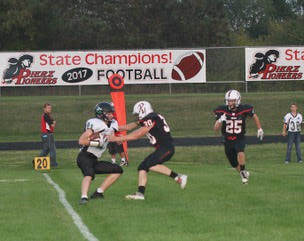
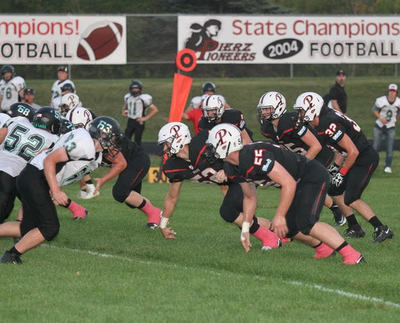
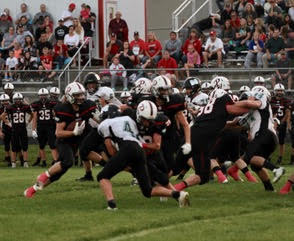
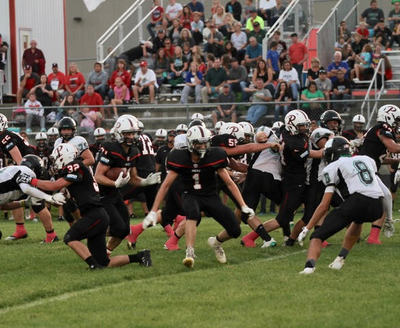
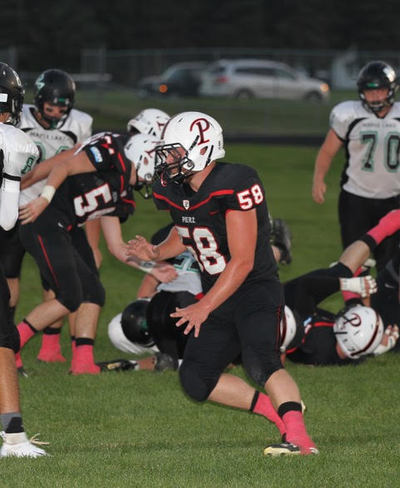
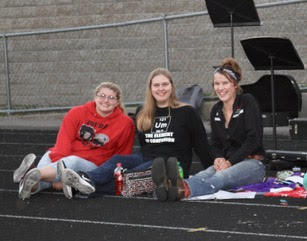


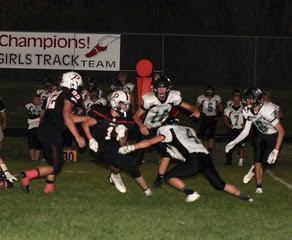
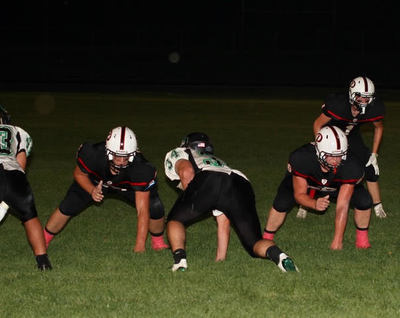


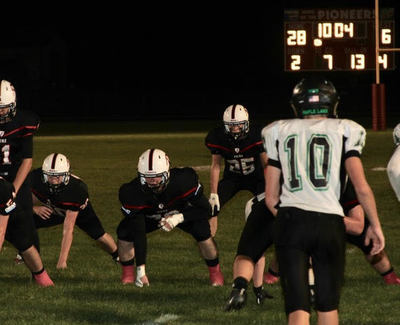

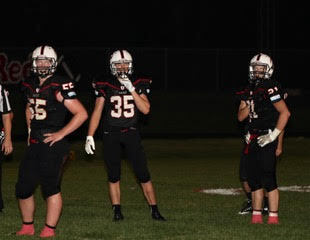
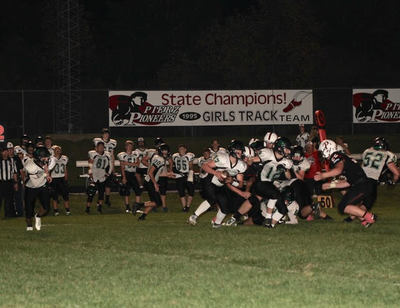
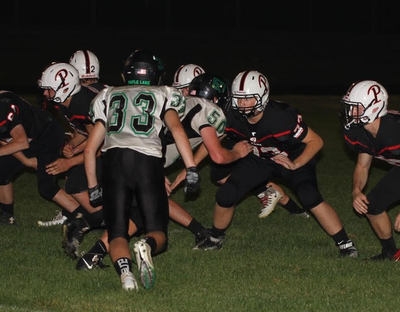
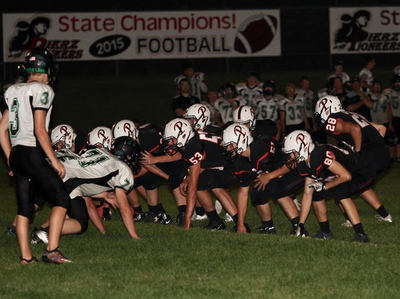


Published on September 16, 2018 16:04
September 10, 2018
The I-94 Murders Teaser
 https://unsplash.com/photos/6Ak1kniy7Ac This blog presents the beginning of
https://unsplash.com/photos/6Ak1kniy7Ac This blog presents the beginning ofThe I-94 Murders to wet your whistle until the book is in your hands.
You can order the book on the home page,
and I will ship it out this week.
 The Beginning
YESONIA HARTMAN, SIXTEEN
The Beginning
YESONIA HARTMAN, SIXTEEN9:30 P.M., SATURDAY, NOVEMBER 21, 2015,
BUCKMAN, MINNESOTA FALL WAS THE WORST TIME to have a sinus infection, and my misery was not going over well with my seventeen-year-old sister. Leah had a big night planned with some guy she’d been talking to online, and she wanted me out of the house. I didn’t blame her, but I couldn’t move without my head hurting. Leah was being such a bitch about it. We shared a bedroom, so I agreed to lock myself in the room for the night and not make a sound.
Our parents were out with friends at the Bottoms Up Saloon. I called it the “twerk bar,” but my humor was lost on them.
Leah could afford to be a bitch, as people described her as a young Sophia Vergara, while I, on the other hand, was nicknamed “Sony,” and compared to a flat-screen television. Older boys had been after Leah since she was eleven, and she had fallen so hard for the last one she humiliated both of us by sending him a topless picture of herself. Our parents would freak if they knew boys were now sending it around. If that’s what she had to do to get a guy, what am I going to have to do? And she was the one who was mature enough to have a cell phone. It wasn’t fair.
As crappy as I felt, I wasn’t going to miss creeping on Leah’s first meeting with Cully for anything. I was upstairs, so I crawled next to the banister. If I’d lie on my stomach, I could see down into the living room without being seen.
Leah was primping in a small mirror in the entry hallway— all chocolate brown hair and smooth, caramel-colored skin. Her simple beige dress contrasted with her colorful personality and the bright, but naïve optimism with which she entered relationships. There was nothing understated about her eye makeup. Her signature cat eye involved the use of Kat Von D’s raven black, super-thick, winged eyeliner. Leah had amazing hazel eyes—dark brown from our Mexican-American mother and emerald green from our German father, splayed out in concentric circles—which she knew was her best feature. Mine, of course, were just a faded brown.
Over the next twenty minutes, I watched Leah text away on her cell phone, with no apparent reply. She was on crutches, due to a torn ACL. She had a large blue wrap from her ankle to her thigh that was supposed to keep her leg motionless. It was a bit of an ordeal, then, when she periodically got up and glanced out the window. After repeated trips to the window, Leah finally accepted she’d been stood up. Irritated she sought solace on the couch.
Buckman was a town one square mile in area. There were about fifty houses, which meant our house number, 27222, had more than 27,000 unnecessary digits. My eyelids were getting heavy, but as I hoisted myself up to go in our room, I had to tease my sister a little. It’s an unwritten rule. She hated it when I sang my revamped version of “Please Come to Boston.” Because of that, I deliberately crooned, “Please come to Buckman for the springtime. You can sell your sweet corn on the sidewalk. And tan at a gas station where I’ll be working soon . . .”
Potato chips tumbled to the floor as Leah scrambled for a shoe to throw at me. She yelled in warning, “You better hope I don’t catch you!”
When I saw she was half crying, I felt badly and apologized, “I’m sorry—I . . .” Realizing nothing I could say would comfort her, my voice trailed off. I got up and retreated to our bedroom. After first slamming the door to let her know I was in the room, I quietly reopened it—just in case. The front of my forehead throbbed in protest of my movements, so I collapsed on my bed and pulled a pillow over my eyes.
I must have drifted off, but I woke to hear Leah talking to someone downstairs. She was asking impatiently, “Why don’t you just step where I can see you?”
I pulled the pillow from my eyes, and strained to hear the exchange. The voice of whoever she was talking to was muffled, so I could barely make out him saying, “My phone battery froze, so I didn’t get your texts. What do I need to do to prove to you that I’m Cully?” I realized the discussion was being held through our locked front door.
Leah remained silent.
I silently slid off my bed and snuck back to my prone position next to the bani-ster, peering downstairs. Could a phone battery freeze at thirty-four degrees?
He spoke again, “Okay, I’ll tell you what I know. You tore your ACL dancing in front of the mirror.” In spite of the searing sinus pain through my head, I had to giggle over that. Leah had told everyone she had been trying a rock climbing maneuver.
Her hand was on the doorknob of the still-closed door, and she leaned her forehead against the door.
He continued, “You wanted to play volleyball in college, but being five-six, and now having a torn ACL, you feel that’s shot. You told me you had two chances—slim and fat—and now you have none. You weighed 125 before the injury, but now you weigh 136.”
Leah jerked her head back indignantly, “One thirty-five. I’m sure I said one thirty-five!”
“Okay, what else? You secretly hope your volleyball team loses in your absence.”
“Shhhh,” Leah shushed him. She turned around and leaned her back against the door, arms crossed. She turned her face toward the door and suggested, “Tell me about you.”
“I hate talking about me—you know that.” After thirty seconds of silence, Cully confessed, “Okay. My dad’s in prison. My mom’s been with a dozen guys who rub her like a bad stain before they completely wash her from their lives. I spend my free time hacking into people’s computers and reading about their lives, because my life sucks.”
I groaned inwardly. This is getting pathetic. But I think I’d still let him in. He’s got to be telling the truth. Who’d lie about that?
In an apparent concession, Leah’s arms dropped to her sides; she turned again, and her fingers curled tentatively around the doorknob.
“Look, I’ll go,” Cully offered. “I just want you to know you’re beautiful. And soon you’ll resume an active lifestyle, with a new appreciation of the freedom of unrestrained movement.”
I shook my head gently, careful not to stir up my sinuses. Wow. Girl, let the boy in. I guess this guy wasn’t a big enough loser to make her roster.
Suddenly, Leah smoothed her hair and reached for the deadbolt on the door as she turned the knob already in her hand. I heard it snick open.
CRASH! Before I had a chance to smile, our front door blasted open, and Leah went flying backward to the floor. A heavy man landed on top of her and straddled her quickly before she could react. I tried getting up, but I felt frozen in place. Leah winced in pain as she reached for her injured knee. He struck her hard in the stomach, knocking the wind out of her.
My headache was pulsing in earnest now and, as if in sympathy with Leah, I couldn’t breathe. I tried to yell for him to stop, but only a barely audible whine left my constricted throat and went unnoticed.
Leah fought back with a resilience that made me proud of her. Cully pulled his weight up for a moment and slammed her to the floor. Dazed, Leah moaned in pain. Tears of helplessness began flowing, creating trickles of winged eyeliner from her eyes to her ears.
Instead of conceding, Leah rallied and elbowed him in the face with the raging scream of a warrior. When he raised his body to slam her once again, she quickly squirmed out from under him. Crawling on her hands and her one good knee, her blue-wrapped stiff leg clunking awkwardly behind her, Leah managed to escape his grasp. But Cully caught up with her and tackled her hard, face down, and pummeled her in the kidney with his fist. Then he turned her over, and held her wrists to the floor. He was now firmly in control.
Panting from exertion, he laughed as he told her, “My name is Culhwch, pronounced Cull-lock in Scotland, but in America we’ll say Cul-witch.”
Their wrestling had landed them so Culhwch was facing away from me. I dug deep and got myself on my feet. I began slowly and silently working my way down the steps, my eyes riveted on my sister and this monster, with no idea what I’d do once I reached them. Searing pain ripped through my skull when I moved, forcing me to sit.
He grasped her chin to hold her focus. “Just to be clear, you’re not telling any-body about this, because I have all those topless pictures of you, and I’ll make sure your parents and everyone in your church youth group gets them if you say a word.” His head turned my way ever so slightly, so I froze in place. He focused on her once again.
“But you were so nice to me,” Leah whimpered. I wanted to hold her head in my lap and gently soothe her, like Mom did when we were little.
Cully laughed at her, “I Googled, ‘What do you say to someone who’s lost a lover?’ I found, ‘I wish I had the right words. Just know I care. I can’t tell you how to feel, but I’ll listen.’”
How humiliating. I felt sick for Leah. I took a few more steps down the stairs, praying I wouldn’t hit the one that creaked and had given us away since we were little. The pain in my head once again compelled me to sit back down.
Bewildered with shock, Leah asked, “Why me?”
Cully bragged as he continued to pin her arms to the floor, “I went through hundreds of profiles and cut it down by attractiveness, neediness, willingness to put out for a guy, and it all came down to you.”
He smirked brazenly, “My process is similar to how people steal cars today. People don’t hotwire cars, anymore—they haven’t been able to do that since 2000. Instead, they search cars until they find one with a hidden set of keys on the frame—typically hidden under the driver’s-side wheel well.” His laugh was low and sinister. “You were available and easy.”
My experience arguing with Leah told me her blood was boiling, and she was about to say something stupid. I silently prayed she wouldn’t. Her gaze shifted past his face, and she locked eyes with me. She shook her head slightly, her eyes warning me off. Then, with venom in her voice, Leah spat, “And now you’re going to get your ass kicked by a one-legged girl!” She valiantly scratched and hit, until he got his hands around her throat. Soon, he was choking the life out of her!
An unrelenting rage overtook him, and he unleashed it on Leah. I didn’t have the power to stop him.
Leah’s panicked resistance just seemed to anger him further, and he tightened his grip. After a torturous minute or two, her ferocity dwindled to a stop. Her good leg stilled. I watched helplessly, feeling that, not only had I abandoned her, but life was now abandoning her, too.
My head swam with agony and, feeling weak, I clung to the spindles as I stood. Instead of coming to Leah’s rescue, I retreated back up the stairs. Carelessly, I stepped on the damn creaking step.
Culhwch glanced up, but before turning my way, he caught his own reflection in the living room window. He suddenly pulled his hands away from Leah, as if they were burned by the flesh on her neck. What did he see? He was staring intently at his own reflection in the window. When he turned in my direction, I was out of his line of sight, again lying flat on the floor at the top of the steps.
I could see Leah’s carefully applied makeup was smeared about her face like dirt, but she was still sadly pretty. I urged her in my mind, C’mon Leah. I’ll never argue with you again. I promise. The miserable pig of a man was still sitting on her still body. Suddenly, Leah started coughing and gasping for air, and I felt a surge of adrenaline. She was alive, but now she was scared to death.
Cully mercilessly howled at his good fortune and taunted her, “If I wanted you dead, you’d be dead.” Using both hands on either side of her head, he pushed himself clumsily to his feet and stood over her. He lecherously grunted, “I need a souvenir. You told me your dad has a gun. I’ll let you go if you tell me where it is; then I’m going to leave, but the gun better damn well be there, or our evening isn’t over.”
Leah lay as vulnerable as a lamb. It was clear from her expression she truly feared her life was about to end. Her bruised voice choked out, “It’s in my parents’ bedroom. There’s a compartment in the headboard.”
Hell. That’s exactly where the gun was.
Leah glanced over at her cell phone on the floor and, for a moment, I had a sickening fear she was about to risk going for it.
Cully warned her, “If you tell anyone about tonight, I swear I will find you and finish this—even if it’s years from now. Do you understand?”
Leah nodded tearfully. Cully noticed Leah’s cellphone on the floor, and snatched it up as he left the room.
I scrambled downstairs to Leah’s side. Since she was in no shape to run, I helped her up and, with her arm around my neck, she was able to hobble up the stairs. We moved as quickly as she could with her wounded leg and beaten body, fearing what would happen when he returned with that gun. Once inside our bedroom, we pushed a dresser against the door, hoping it would keep him at bay. We slid to the floor and clung to each other behind the dresser, waiting for the jolt of Cully ramming the door. Instead, we heard the porch door close as he left the house.
I touched her cheek gently, as it was already discoloring with bruises, and looked Leah in the eyes. I urged, “We need to call the police.”
Leah painfully pulled my hand from her face, and gripped it ferociously. She urged, “You have to promise me you will never tell anyone about this—he will kill me! And if Mom and Dad and everyone at church gets those damn pictures of me, that’ll be way worse than tonight. Please, Sonia, let it be over,” she breathed painfully. “If the neighbor asks, say it was some guy looking for Trail’s Edge”—Buckman’s one-stop shop for food, fuel, liquor, hair styling, and tanning.
“But your face and neck—you’re already bruising. Someone’s going to notice you’ve been beaten up!”
Leah smiled sadly, “That’s what makeup is for, Sonia.”
Feeling cowardly, I reluctantly agreed to stay silent. I commented, “He’s lucky I didn’t have that gun.”
There’s a shadow on the ground,
So the sun must still be there.
No one’s lost that can’t be found,
By someone, somewhere.
Jerry Riopelle
 Quotes:
Quotes: I did not attend his funeral, but I sent a nice letter saying I approved of it.
Mark Twain
Knowledge is like underwear. It is useful to have it, but not necessary to show it off. Bill Murray
Everything is changing. People are taking the comedians seriously and the politicians as a joke.
Will Rogers
I told my psychiatrist that everyone hates me. He said I was being ridiculous – everyone hasn’t met me yet.
Rodney Dangerfield
Thanks for listening,
Frank Shane, Rachael, and Avery Jane get ready for the Vikings opener.


 September ends the Rock and Stroll car shows in Pierz on Thursday nights for the summer. It’s a nice community event!
September ends the Rock and Stroll car shows in Pierz on Thursday nights for the summer. It’s a nice community event!
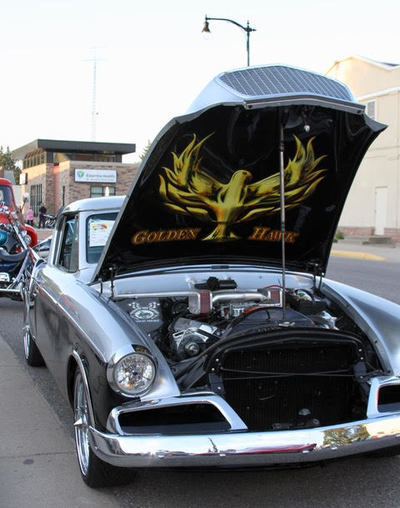











Published on September 10, 2018 15:14
September 4, 2018
Advanced Copies of The I-94 Murders are now Available!


ADVANCED COPIES
of The I-94 Murders are available for purchase through my webpage immediately. The cost is $15. Tax is included in this cost.Please place your order on the home page. Indicate how you would like the book signed.Include your address. The books will ship to your address on September 10, 2018. The I-94 Murders book opening:
ADVANCED COPIES
of The I-94 Murders are available for purchase through my webpage immediately. The cost is $15. Tax is included in this cost.Please place your order on the home page. Indicate how you would like the book signed.Include your address. The books will ship to your address on September 10, 2018. The I-94 Murders book opening:Where: Shoppes of Little Falls on Saturday, September 22, 2018. The book opening is a Full Moon Event.
When: 12:00 to 3:00, with Frank Weber speaking about the book at 1:00. Frank will sign books before and after speaking.
Starry Eyed Brewing Co. tap offerings will be available at the event including a “Blood Orange” IPA, specially made for the mystery event, as well as their wonderful Cream Ale.
 Award winning chef, Scotty Stocco, will be preparing hors d’oeuvres that will be served at the event. Writing The I-94 Murders presented a unique challenge in that it was based on a true-life serial killer who hadn’t been caught at the time the book was written. The Golden State Killer, initially known as the “I-680 Rapist” in California, committed a series of crimes that involved bondage and murder, with the ultimate goal of raping women. The killer taunted investigators and victims by contacting some of his victims after the crimes. I profiled the killer and outlined physical and personality characteristics that I felt were unique to this person. I also believed the initial profile the California investigators used was wrong, and this is why the case went unsolved for years. Since the killer hadn’t been caught, I used historical information for the I-94 Murderer that I had received from forensic interviews with a killer who had a similar personality style. I outlined, using Investigator Jon Frederick, a methodical manner in which investigators could use the DNA they had to catch the killer. I turned my book over to North Star Press at the end of December 2017.
Award winning chef, Scotty Stocco, will be preparing hors d’oeuvres that will be served at the event. Writing The I-94 Murders presented a unique challenge in that it was based on a true-life serial killer who hadn’t been caught at the time the book was written. The Golden State Killer, initially known as the “I-680 Rapist” in California, committed a series of crimes that involved bondage and murder, with the ultimate goal of raping women. The killer taunted investigators and victims by contacting some of his victims after the crimes. I profiled the killer and outlined physical and personality characteristics that I felt were unique to this person. I also believed the initial profile the California investigators used was wrong, and this is why the case went unsolved for years. Since the killer hadn’t been caught, I used historical information for the I-94 Murderer that I had received from forensic interviews with a killer who had a similar personality style. I outlined, using Investigator Jon Frederick, a methodical manner in which investigators could use the DNA they had to catch the killer. I turned my book over to North Star Press at the end of December 2017.In April of 2018, Joseph DeAngelo, was arrested for the Golden State Killer crimes. My profile of DeAngelo was dead on, including the suspicion that he had a small penis, a crime fact not revealed until after his arrest. They cracked the case in the exact manner I outlined in The I-94 Murders, making this one of the most unique murder mysteries to hit the market. I wanted to write a book that challenges the reader to identify the killer, so there are useful clues offered throughout the story. The mystery addresses the difficulties inherent in starting the investigation of a serial killer since for the first murder, it’s assumed the killer is close. I also wanted to demonstrate how investigations are done by people who have relationship issues and who have desires to make life changes. Investigators love and care about others and are driven by their work. With all of this said, the mystery is a challenge for the reader to solve, and it has its share of twists and turns. Enjoy the ride—it’s on the freeway!
 A feature article will soon be released in the Brainerd Crossing Arts Alliance newsletter.
The I-94 Murders
book review is available at:
A feature article will soon be released in the Brainerd Crossing Arts Alliance newsletter.
The I-94 Murders
book review is available at: https://charliesixty.wordpress.com/2018/08/30/book-review-the-i-94-murders/
Here is the very beginning:
In I-94 MURDERS, Detective Jon Frederick finds himself in charge of investigating a series of murders committed in towns along the interstate highway that dashes its way through the heart of Minnesota. Driven to find the killer, Detective Frederick must use his wits (part old-school police work, part cutting edge forensics) to identify and catch the criminal. Along the way, he must find time for important loves in his life and maintain contacts with old friends – all of which dovetail into a story line that keep the reader turning pages.
Author Weber gives us characters of a wide range – the unredeeming lifestyles of addicts and junkies – cryptically self-important criminals, and at the forefront, there’s Jon Frederick, balancing career and his love life as all these people cross his path. There’s the news reporter who wishes she could find a better gig. There’s the struggling young lady who has left herself wide open in ways that are dangerous to her. There’s the unreliable good friend that Jon just can’t trust. There are Jon’s work partners, who are overcome with either bureaucracy or wavering loyalty. And then, there’s the killer who has secrets that motivate his (her?) crimes. To add to the writing, author Weber gives us the character of the secret side of the internet that so few admit or even acknowledge – and, reader, you had better believe its there and at work… Alicia Isom is the model featured on the cover of The I-94 Murders





 The next blog will include the preface of The I-94 Murders. Odd Facts about death row:
The next blog will include the preface of The I-94 Murders. Odd Facts about death row:The top 5 listed occupations for Americans who were executed between 1608 and 2002 were:
1. Slave (1748)
2. Laborer (548)
3. Farmhand (369)
4. Farmer (347)
5. Farm laborer (168)On January 4, 2003, Thomas Edison first demonstrated the lethal power of alternating current electricity by electrocuting an elephant at Luna Park Zoo on Coney Island in front of 1500 spectators.Death row inmates are given one a day vitamins.
After an execution, state law requires that an autopsy is performed. (It’s like shooting someone and then questioning how they died.)
Thanks for listening,
Frank Kaycee visits from Maryland!




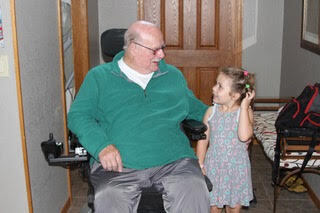

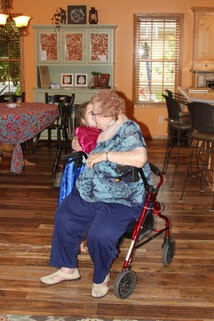







Published on September 04, 2018 08:03
August 21, 2018
THE 1-94 MURDERS book opening, bullying, and the bizarre confession of Carl Dorr
 Frank signing books at Battle Lake.
Frank signing books at Battle Lake.  Frank signing books at Battle Lake. The I-94 Murders book opening will be on September 22, 2018 at the Shoppes in Little Falls. The release of this thriller will be the full moon event at the Shoppes for September. The Starry Eyed Brewing Co. will be brewing a “Blood Orange” IPA for the event and other tasting samples will be available. Award winning chef, Scotty Stocco, will be preparing appetizers. As with the book opening of Murder Book, I’m inviting blog readers to suggest background music for the opening. I have included a short summary of the book in the last blog, and I’ll share some of the suggested background songs I’ve received so far:Please Come to Boston – Dave Loggins (The book starts out with a younger sister teasing her older sister with her version of “Please Come to Buckman for the springtime…. You can sell your sweetcorn on the sidewalk… By a gas station that cuts hair where I’ll be working soon…”)Sharing the Night Together – Dr. HookLong Train Runnin’ – The Doobie BrothersS&M – RihannaHighway Patrolman – Bruce SpringsteenIn da Club – 50 CentPony – GinuwineI’m Still In Love With You – Steve Earle & The Del McCoury BandCrazy On You – HeartCruel to Be Kind – Nick LoweFlower – Amos LeeFour Strong Winds – Neil YoungBring It On Home to Me – Sam CookeStill the Night – BoDeansGood Ole Boys Like Me – Don WilliamsI Want You Back – Jackson 5Amen – HalestormFountain of Sorrow – Jackson BrowneLet It Ride – Bachman-Turner OverdriveThat Smell – Lynyrd SkynyrdI Love You – Amy BelleChain of Fools – Aretha Franklin On May 31, 1986, Carl Dorr of Silver Spring, Maryland, experienced the worst day a parent could experience. His daughter Michelle Dorr disappeared, and investigators told Carl they suspected his 6-year-old daughter was dead. Carl experienced tremendous guilt and shame over not watching over and protecting his daughter. She had been in a small plastic pool in the backyard. Carl was brought in for a polygraph examination and failed. Carl was interrogated by investigators over and over and finally confessed to having killed his daughter. He told the police they could find her body under the crawl space of his house. (Her body was not there.) He then told investigators he had buried her above his father’s casket in the graveyard. It wasn’t there. Carl stated the TV was now talking to him attempting to give him clues about his daughter’s disappearance. Carl finally placed himself in a hospital and, after three days of rest, he came back out and stated he never killed his daughter. He took another polygraph examination, stating he had nothing to do with his daughter’s disappearance, and this time passed. Carl Dorr had experienced a psychotic state after the overwhelming loss of his daughter.
Frank signing books at Battle Lake. The I-94 Murders book opening will be on September 22, 2018 at the Shoppes in Little Falls. The release of this thriller will be the full moon event at the Shoppes for September. The Starry Eyed Brewing Co. will be brewing a “Blood Orange” IPA for the event and other tasting samples will be available. Award winning chef, Scotty Stocco, will be preparing appetizers. As with the book opening of Murder Book, I’m inviting blog readers to suggest background music for the opening. I have included a short summary of the book in the last blog, and I’ll share some of the suggested background songs I’ve received so far:Please Come to Boston – Dave Loggins (The book starts out with a younger sister teasing her older sister with her version of “Please Come to Buckman for the springtime…. You can sell your sweetcorn on the sidewalk… By a gas station that cuts hair where I’ll be working soon…”)Sharing the Night Together – Dr. HookLong Train Runnin’ – The Doobie BrothersS&M – RihannaHighway Patrolman – Bruce SpringsteenIn da Club – 50 CentPony – GinuwineI’m Still In Love With You – Steve Earle & The Del McCoury BandCrazy On You – HeartCruel to Be Kind – Nick LoweFlower – Amos LeeFour Strong Winds – Neil YoungBring It On Home to Me – Sam CookeStill the Night – BoDeansGood Ole Boys Like Me – Don WilliamsI Want You Back – Jackson 5Amen – HalestormFountain of Sorrow – Jackson BrowneLet It Ride – Bachman-Turner OverdriveThat Smell – Lynyrd SkynyrdI Love You – Amy BelleChain of Fools – Aretha Franklin On May 31, 1986, Carl Dorr of Silver Spring, Maryland, experienced the worst day a parent could experience. His daughter Michelle Dorr disappeared, and investigators told Carl they suspected his 6-year-old daughter was dead. Carl experienced tremendous guilt and shame over not watching over and protecting his daughter. She had been in a small plastic pool in the backyard. Carl was brought in for a polygraph examination and failed. Carl was interrogated by investigators over and over and finally confessed to having killed his daughter. He told the police they could find her body under the crawl space of his house. (Her body was not there.) He then told investigators he had buried her above his father’s casket in the graveyard. It wasn’t there. Carl stated the TV was now talking to him attempting to give him clues about his daughter’s disappearance. Carl finally placed himself in a hospital and, after three days of rest, he came back out and stated he never killed his daughter. He took another polygraph examination, stating he had nothing to do with his daughter’s disappearance, and this time passed. Carl Dorr had experienced a psychotic state after the overwhelming loss of his daughter. On that day, May 31, 1986, Hadden Clark had been kicked out of his brother’s home in Maryland, after his brother accused him of improper behavior with the children in the home. His brother took the kids away for the day, and gave Hadden the day to pack.
On October 18, 1992, 23-year-old Harvard graduate, Laura Houghteling, was stabbed to death in her bedroom, just a couple miles away from Carl Dorr’s home. The place had been very carefully cleaned; however, a hair from a wig was found on her brush. Investigators knew the family gardener, Hadden Clark, was a cross-dresser. Clark ultimately confessed to the murder. Investigators who worked the Michelle Dorr disappearance, remembered Hadden Clark was a neighbor who was interviewed in Michelle Dorr’s disappearance. Hadden became physically ill when Michelle’s name was mentioned during the interview in 1986, but when Carl Dorr confessed, the investigation ended. It was six years later, but investigators went back to Hadden Clark’s old home, near the Dorrs, and tore up floor boards, ultimately finding Michelle’s DNA. Hadden was convicted of Michelle Dorr’s murder, and, shortly after his conviction, showed police where Michelle’s body was. It was believed Michelle had come to the Hadden Clark’s door looking for her friend and instead found Hadden Clark alone in the home. Hadden Clark is described as a paranoid schizophrenic with and obsession with killing. A recent study on bullying revealed the following statistics:75% of all school shootings are associated with the shooter being bullied. More than half of bullying situations stop if a peer intervenes. Schools with anti-bullying interventions have demonstrated a decrease in bullying. Being ostracized can be more damaging than physical bullying, as children who are viewed as outcasts feel a threat to a meaningful existence. Bullies are generally average academic students. They are not loners and often they have people who, at the very least, give them attention for their misbehavior. Victims of bullying have increased suicidal ideation. LGBT students are the highest risk of being bullied in schools. All children with disabilities are at higher risk to be bullied. Being ostracized in school activates the same areas of the brain that are activated during physical pain. Prior to middle school, girls bully more than boys. After middle school, boys bully more than girls. You have to ask the child directly if they have been bullied or physically hurt by someone. None of the parents of the children who reported being bullied in the study, were aware their child had been bullied. One of the best things you can do is have healthy children talk to bullied children or bullies in the schools, to provide them some healthy support. Students want to make the world better, and one of the best things they can do is have an impact on students who struggle right in their school. Our best students are very busy; however, one of the best things they can do is have an impact in their very own community. Quotes:
An apple a day keeps anyone away, if thrown hard enough.
The more you weigh, the harder you are to kidnap.
He’s the fool that there’s no old fool like.
The difference between genius and stupidity, is that genius has its limits. Albert Einstein
Thanks for listening,
Frank
 Stain glass window titled: "The Decent of the Holy Spirit" from St. Michael's church in Buckman. I love the way the white and blue robe glows in the sun.
Stain glass window titled: "The Decent of the Holy Spirit" from St. Michael's church in Buckman. I love the way the white and blue robe glows in the sun.  Frank speaking at a mystery writers panel from Sisters in Crime at the Brooklyn Park Library last Saturday.
Frank speaking at a mystery writers panel from Sisters in Crime at the Brooklyn Park Library last Saturday.  Frank enjoying a cream ale at Starry Eyed Brewing Co. in Little Falls.
Frank enjoying a cream ale at Starry Eyed Brewing Co. in Little Falls.  Note the message on the mirror.
Note the message on the mirror. 
 Avery Jane Weber
Avery Jane Weber 
 Shane and Rachael Weber with their daughter, Avery.
Shane and Rachael Weber with their daughter, Avery.
Published on August 21, 2018 17:46
August 13, 2018
Book Opening, Richmond and Zaun Revisited
Save the date: The book opening for The
I-94 Murders
will be at The Shoppes of Little Falls on September 22, 2018. Award winning chef Scott Stocco will be serving hors d’oeuvres at the event. The I-94 Murders will be for sale and Frank Weber will be signing books. 
 Photos taken by Xsperience Photography, model Alicia Isom I have received a number of comments, emails and additional information about Richard Zaun’s murder of Roger Arkusczewski which I would like to share. I will add my own thoughts also. The homicide occurred at approximately 5:00 pm. Zaun had told Roger he needed to stay after school for messing up the cafeteria earlier in the day.
Photos taken by Xsperience Photography, model Alicia Isom I have received a number of comments, emails and additional information about Richard Zaun’s murder of Roger Arkusczewski which I would like to share. I will add my own thoughts also. The homicide occurred at approximately 5:00 pm. Zaun had told Roger he needed to stay after school for messing up the cafeteria earlier in the day.
According to Morrison County Court documents, Richard Zaun was married the previous November, but hadn’t consummated his marriage. Richard felt alienated from teachers as he felt he was the only one not agreeing with the pending contract. Richard Zaun didn’t have his previous employment renewed at Randall due to disciplinary problems with students. Father Heltmes in Pierz evidently told Richard Zaun he could not hear his confession because Zaun wasn’t Catholic. It was reported that Roger Arkusczewski told his mother the morning of the murder that he was afraid of Richard Zaun. Richard Zaun poured water on Roger. Richard Zaun consumed Valium after the homicide. Richard Zaun died last year.
My thoughts and responses to comments:
~I don’t believe Richard Zaun took valium prior to the homicide. Valium relaxes the central nervous system. Valium is used to pull people out of status seizures (unending seizures). I don’t believe Zaun could have killed Roger if he was on Valium. He would have been too relaxed, and people don’t give up life easily.
~Profilers suggest that strangling is often considered a sexual form of homicide by the killer.
~I have never been interested in writing a book on this case because I don’t see this as much of a mystery. It reminds me of many of the domestic abuse assessments I’ve done. You have an obsessive guy, Zaun, who is angry that someone doesn’t behave as he desires in his order of the world so he assaults him. After the brutal act, Zaun feels tremendous shame. He dumps water on Roger trying to revive him, and then looks for some type of religious forgiveness. Zaun pops valium over the extreme narcissistic shame created by his crime. But none of it changes the tragedy he brought to the Arkusczewski family and to his community.
~My last comment has to do with premeditation. As I stated earlier, people don’t give up life easily. Zaun had to catch him by surprise, and he had to know what he was going to do. I wear a tie for court and to speak. It’s never occurred to me, even when I’m frustrated, that I could use the tie as a weapon. I think there was some type of weird fantasy that had occurred previously. Again this is simply speculation. My prayers go out to the Arkusczewskis.
Richmond, Virginia
Last week I flew into Baltimore and then spent time in Washington DC and Richmond, Virginia.
We visited St. John’s church in Richmond where Patrick Henry made his famous speech, in 1775. Henry was a bartender who became a self-educated attorney. Colonists were upset for “taxation without representation” and this led to the Boston Tea party, where taxed tea was dumped in the harbor. Britain responded by firing all of the elected officials in Massachusetts and replacing them with British officers. Britain took away the right to assemble and the right to trial by a jury of peers. Virginia had the House of Burgesses and one day, when the appointed British Governor was ill, they still met. Britain felt this was disrespectful and responded again by firing all elected officials and replacing them with the British. So the two largest colonies had now lost basic rights. Britain sent soldiers and inserted them in homes throughout Virginia and Massachusetts, violating the rights of the owners. They took their food and weapons, slept there, and basically viewed themselves as entitled to take what they wish. In 1775, the former Virginia elected officials (including George Washington, Thomas Jefferson and Patrick Henry) met at St. John’s Church and agreed that Britain didn’t have the right to remove elected officials. When people argued we didn’t want war, Patrick Henry stood and pointed out that the war had already begun. The British invaded our homes, and we weren’t fighting back. He suggested Virginia form a militia and it was put to vote. Patrick Henry declared, “Give me liberty or give me death.” The decision to create a militia barely passed, and George Washington was selected to lead the militia into Massachusetts.
Edgar Allen Poe grew up in Richmond, and Confederate President Jefferson Davis is buried there. Davis had an estate in Mississippi with 74 slaves. Davis is historically criticized for being outperformed by Abraham Lincoln throughout the war. Lincoln has outperformed the vast majority of Presidents since. But more than anyone else, Richmond celebrates Thomas Jefferson, who was a former governor in Virginia. Abraham Lincoln visited Richmond two days before his assassination to take a look at the damage done by fires. Lincoln exited the boat on the James river before arriving at the landing in Richmond, as there were concerns the confederate faithful wouldn’t let him enter. Lincoln felt it was important to support people and unite the country.
Richmond, which part of the confederacy during the Civil War, is a city that is now 51% African American and 40% European American. That makes me feel good. On June 3, 1864 a Union attack on Cold Harbor in Virginia left 7000 soldiers dead in 20 minutes of fighting, which has been the bloodiest period of time in American History. Politicians stated after, “If that scene could have been presented to me before the war, I would have said the cost is too great.” It was the last victory for Robert E. Lee. Ulysses Grant stated later that this battle was his greatest regret. He simplified his strategy after and this decision changed the course of the war. Ulysses Grant ultimately pinned Lee’s confederate troops in Appomattox on April 9, 1865 and forced his surrender. In the pictures I have a photo of George Whythe’s grave. He was murdered at age 80 by his grandnephew who poured poison in his coffee. However, the grandnephew was found not guilty as the only witness was an African American servant who saw him do it, and at the time an African American was not allowed to testify against a white person. Whythe managed to live long enough to write his grandnephew out of his will. Also notice the blue clothing laid out on a bed. It was the designated swim ware for wealthy women in the late 1800’s and early 1900’s. Notice the full one piece outfit, skirt, hat, stockings, and shoes, most of which were wool. That had to be a dashing good time!
Notice in the pictures that the early beer mugs were sewn from leather.
I ate the best cupcake at Carytown Cupcakes, and the best fried chicken I’ve ever eaten, at Mama J’s, in Richmond.
Quotes this week are Southern sayings: We done plowed this furrow clean down to the bedrock! Time to rest the mule. Translation: We've already discussed this - let's move on...
We done plowed this furrow clean down to the bedrock! Time to rest the mule. Translation: We've already discussed this - let's move on...
Lord willing, and the creek don’t rise…. Translation: I’ll do my best.
Well, butter my butt and call me a biscuit…. Translation: A happy surprise.
He squeezes a quarter so tight the eagle screams. Translation: He’s cheap.
Thanks for listening,
Frank Photos from my trip to Maryland, Washington DC, and Richmond, Virginia with Brenda, Preston and Olivia Weber, and Branden, Nicolette, Kaycee, and Andrea Deal.

























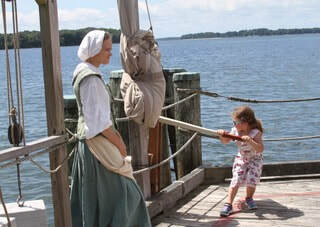











































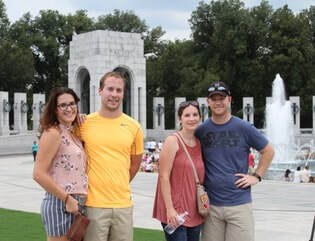





































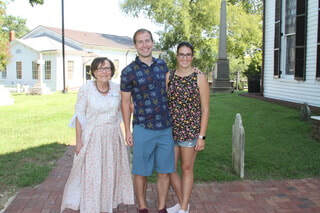
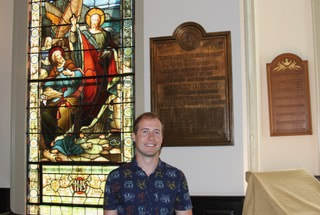





 Photos taken by Xsperience Photography, model Alicia Isom I have received a number of comments, emails and additional information about Richard Zaun’s murder of Roger Arkusczewski which I would like to share. I will add my own thoughts also. The homicide occurred at approximately 5:00 pm. Zaun had told Roger he needed to stay after school for messing up the cafeteria earlier in the day.
Photos taken by Xsperience Photography, model Alicia Isom I have received a number of comments, emails and additional information about Richard Zaun’s murder of Roger Arkusczewski which I would like to share. I will add my own thoughts also. The homicide occurred at approximately 5:00 pm. Zaun had told Roger he needed to stay after school for messing up the cafeteria earlier in the day. According to Morrison County Court documents, Richard Zaun was married the previous November, but hadn’t consummated his marriage. Richard felt alienated from teachers as he felt he was the only one not agreeing with the pending contract. Richard Zaun didn’t have his previous employment renewed at Randall due to disciplinary problems with students. Father Heltmes in Pierz evidently told Richard Zaun he could not hear his confession because Zaun wasn’t Catholic. It was reported that Roger Arkusczewski told his mother the morning of the murder that he was afraid of Richard Zaun. Richard Zaun poured water on Roger. Richard Zaun consumed Valium after the homicide. Richard Zaun died last year.
My thoughts and responses to comments:
~I don’t believe Richard Zaun took valium prior to the homicide. Valium relaxes the central nervous system. Valium is used to pull people out of status seizures (unending seizures). I don’t believe Zaun could have killed Roger if he was on Valium. He would have been too relaxed, and people don’t give up life easily.
~Profilers suggest that strangling is often considered a sexual form of homicide by the killer.
~I have never been interested in writing a book on this case because I don’t see this as much of a mystery. It reminds me of many of the domestic abuse assessments I’ve done. You have an obsessive guy, Zaun, who is angry that someone doesn’t behave as he desires in his order of the world so he assaults him. After the brutal act, Zaun feels tremendous shame. He dumps water on Roger trying to revive him, and then looks for some type of religious forgiveness. Zaun pops valium over the extreme narcissistic shame created by his crime. But none of it changes the tragedy he brought to the Arkusczewski family and to his community.
~My last comment has to do with premeditation. As I stated earlier, people don’t give up life easily. Zaun had to catch him by surprise, and he had to know what he was going to do. I wear a tie for court and to speak. It’s never occurred to me, even when I’m frustrated, that I could use the tie as a weapon. I think there was some type of weird fantasy that had occurred previously. Again this is simply speculation. My prayers go out to the Arkusczewskis.
Richmond, Virginia
Last week I flew into Baltimore and then spent time in Washington DC and Richmond, Virginia.
We visited St. John’s church in Richmond where Patrick Henry made his famous speech, in 1775. Henry was a bartender who became a self-educated attorney. Colonists were upset for “taxation without representation” and this led to the Boston Tea party, where taxed tea was dumped in the harbor. Britain responded by firing all of the elected officials in Massachusetts and replacing them with British officers. Britain took away the right to assemble and the right to trial by a jury of peers. Virginia had the House of Burgesses and one day, when the appointed British Governor was ill, they still met. Britain felt this was disrespectful and responded again by firing all elected officials and replacing them with the British. So the two largest colonies had now lost basic rights. Britain sent soldiers and inserted them in homes throughout Virginia and Massachusetts, violating the rights of the owners. They took their food and weapons, slept there, and basically viewed themselves as entitled to take what they wish. In 1775, the former Virginia elected officials (including George Washington, Thomas Jefferson and Patrick Henry) met at St. John’s Church and agreed that Britain didn’t have the right to remove elected officials. When people argued we didn’t want war, Patrick Henry stood and pointed out that the war had already begun. The British invaded our homes, and we weren’t fighting back. He suggested Virginia form a militia and it was put to vote. Patrick Henry declared, “Give me liberty or give me death.” The decision to create a militia barely passed, and George Washington was selected to lead the militia into Massachusetts.
Edgar Allen Poe grew up in Richmond, and Confederate President Jefferson Davis is buried there. Davis had an estate in Mississippi with 74 slaves. Davis is historically criticized for being outperformed by Abraham Lincoln throughout the war. Lincoln has outperformed the vast majority of Presidents since. But more than anyone else, Richmond celebrates Thomas Jefferson, who was a former governor in Virginia. Abraham Lincoln visited Richmond two days before his assassination to take a look at the damage done by fires. Lincoln exited the boat on the James river before arriving at the landing in Richmond, as there were concerns the confederate faithful wouldn’t let him enter. Lincoln felt it was important to support people and unite the country.
Richmond, which part of the confederacy during the Civil War, is a city that is now 51% African American and 40% European American. That makes me feel good. On June 3, 1864 a Union attack on Cold Harbor in Virginia left 7000 soldiers dead in 20 minutes of fighting, which has been the bloodiest period of time in American History. Politicians stated after, “If that scene could have been presented to me before the war, I would have said the cost is too great.” It was the last victory for Robert E. Lee. Ulysses Grant stated later that this battle was his greatest regret. He simplified his strategy after and this decision changed the course of the war. Ulysses Grant ultimately pinned Lee’s confederate troops in Appomattox on April 9, 1865 and forced his surrender. In the pictures I have a photo of George Whythe’s grave. He was murdered at age 80 by his grandnephew who poured poison in his coffee. However, the grandnephew was found not guilty as the only witness was an African American servant who saw him do it, and at the time an African American was not allowed to testify against a white person. Whythe managed to live long enough to write his grandnephew out of his will. Also notice the blue clothing laid out on a bed. It was the designated swim ware for wealthy women in the late 1800’s and early 1900’s. Notice the full one piece outfit, skirt, hat, stockings, and shoes, most of which were wool. That had to be a dashing good time!
Notice in the pictures that the early beer mugs were sewn from leather.
I ate the best cupcake at Carytown Cupcakes, and the best fried chicken I’ve ever eaten, at Mama J’s, in Richmond.
Quotes this week are Southern sayings:
 We done plowed this furrow clean down to the bedrock! Time to rest the mule. Translation: We've already discussed this - let's move on...
We done plowed this furrow clean down to the bedrock! Time to rest the mule. Translation: We've already discussed this - let's move on...Lord willing, and the creek don’t rise…. Translation: I’ll do my best.
Well, butter my butt and call me a biscuit…. Translation: A happy surprise.
He squeezes a quarter so tight the eagle screams. Translation: He’s cheap.
Thanks for listening,
Frank Photos from my trip to Maryland, Washington DC, and Richmond, Virginia with Brenda, Preston and Olivia Weber, and Branden, Nicolette, Kaycee, and Andrea Deal.


















































































































Published on August 13, 2018 00:00



